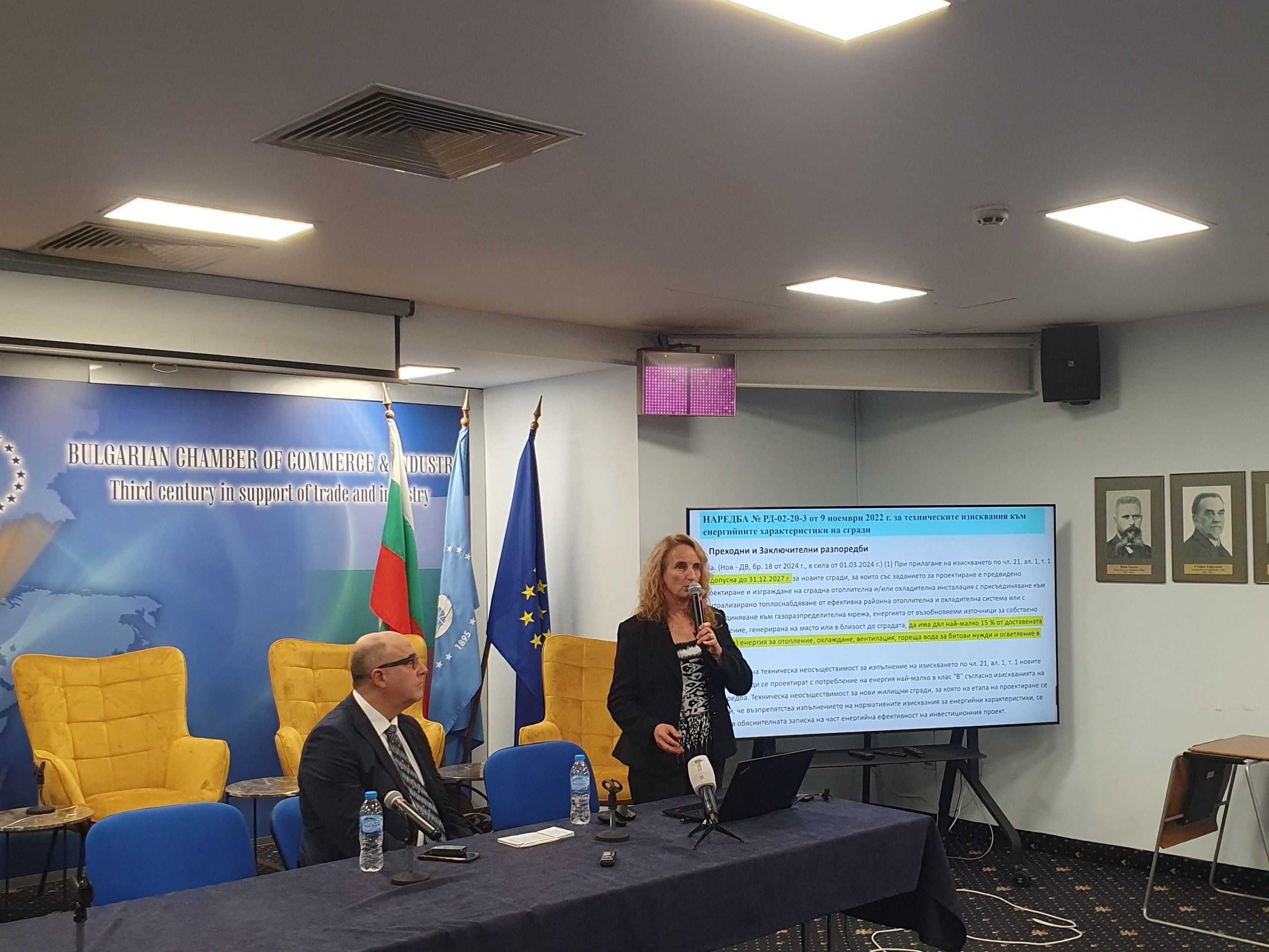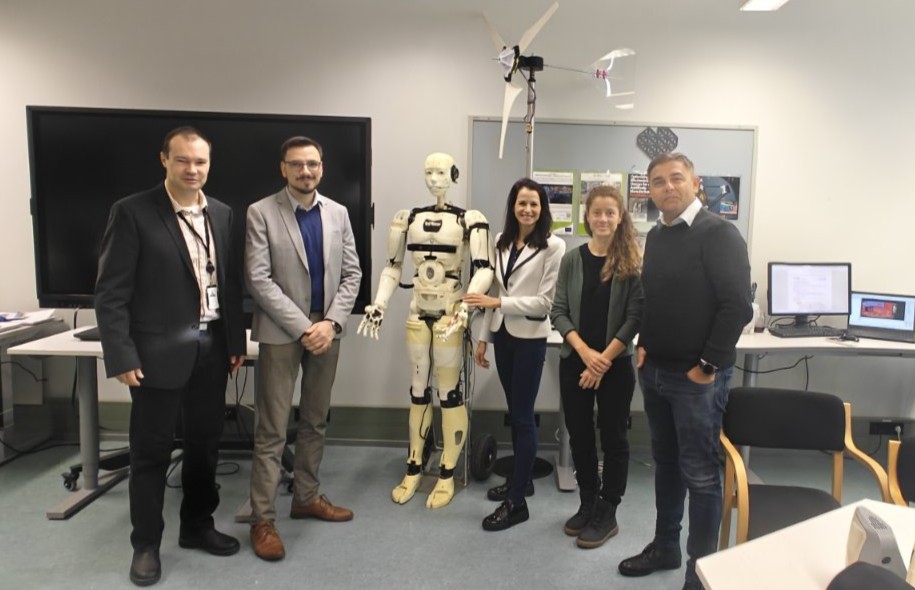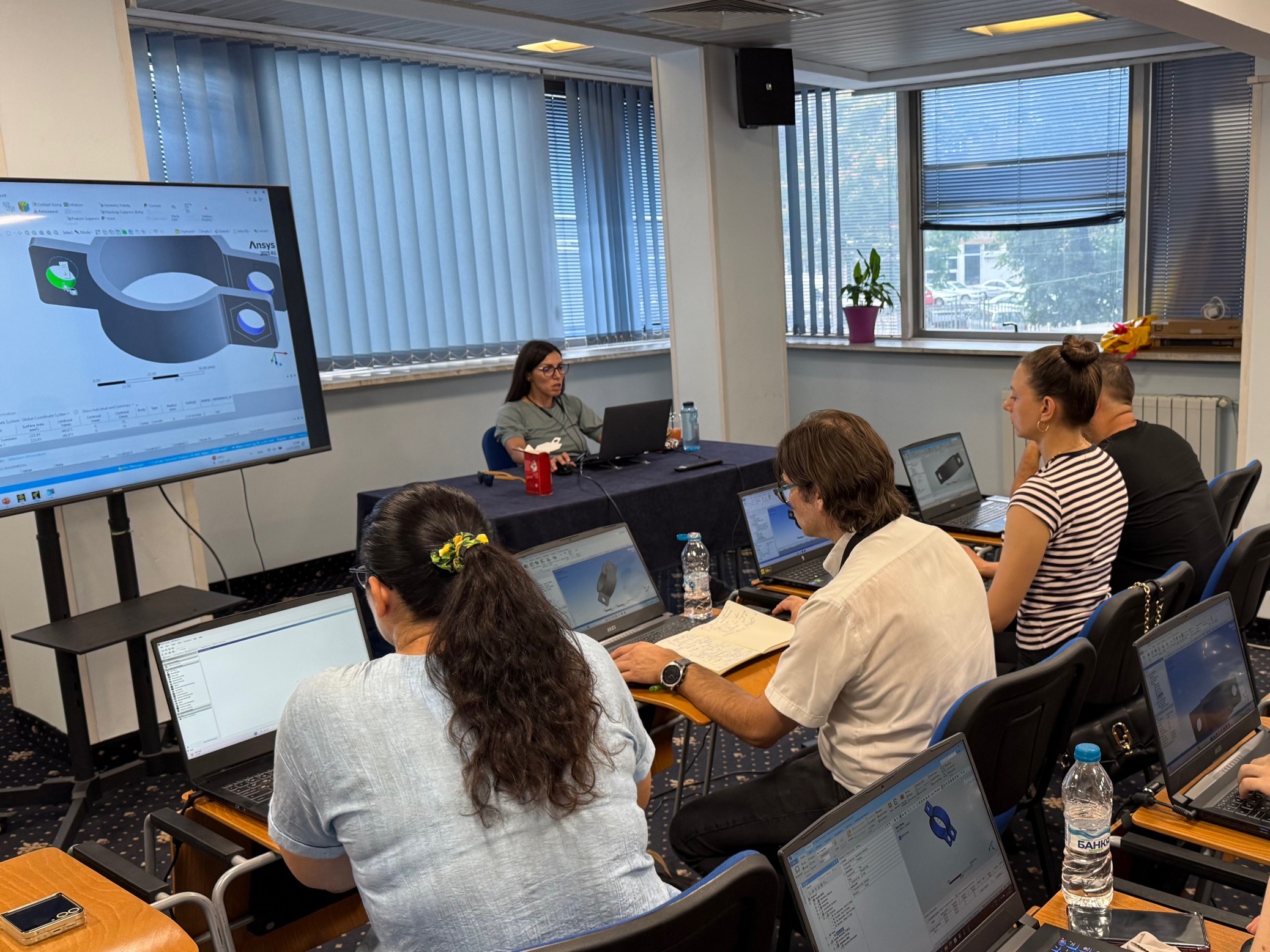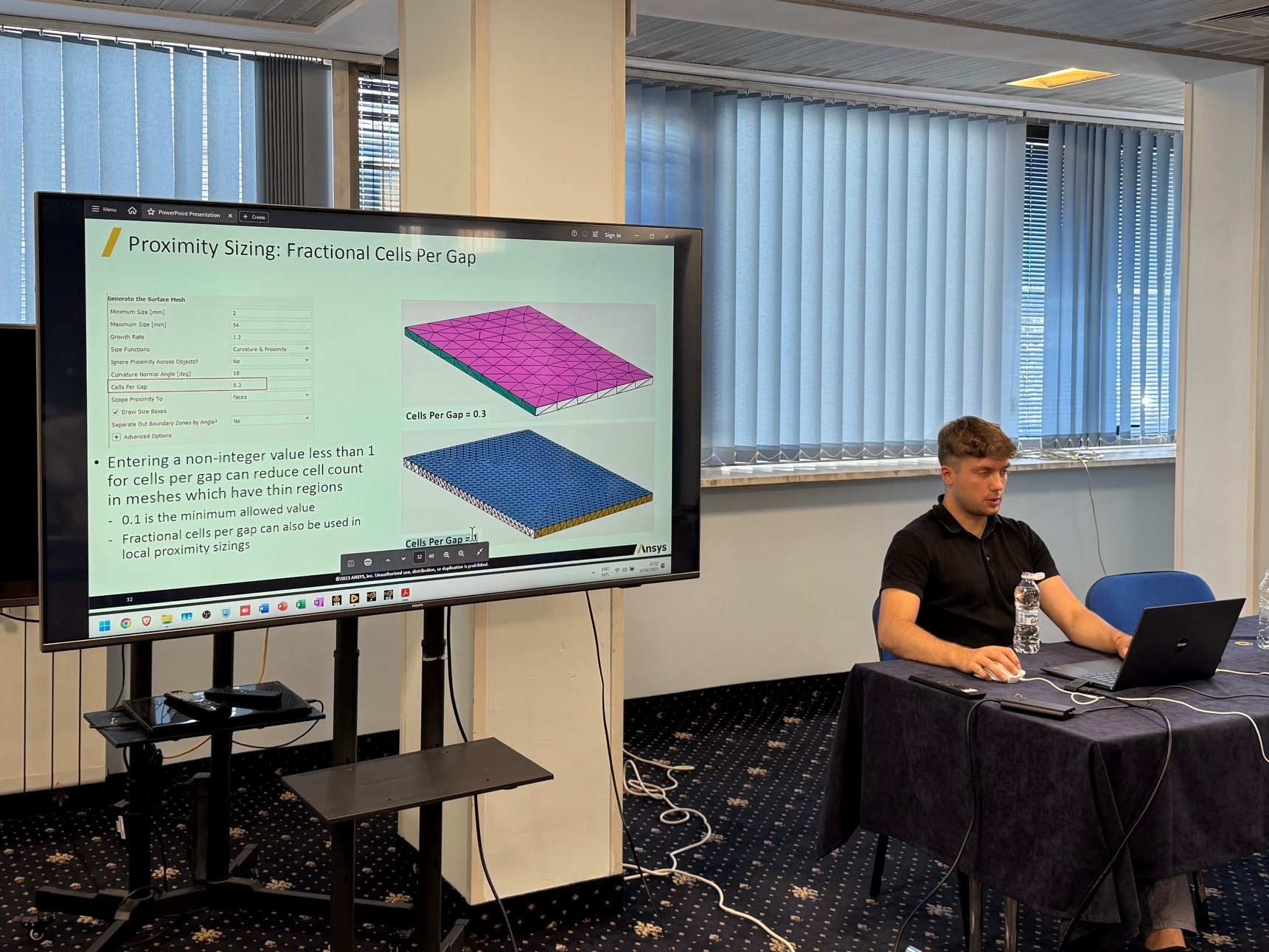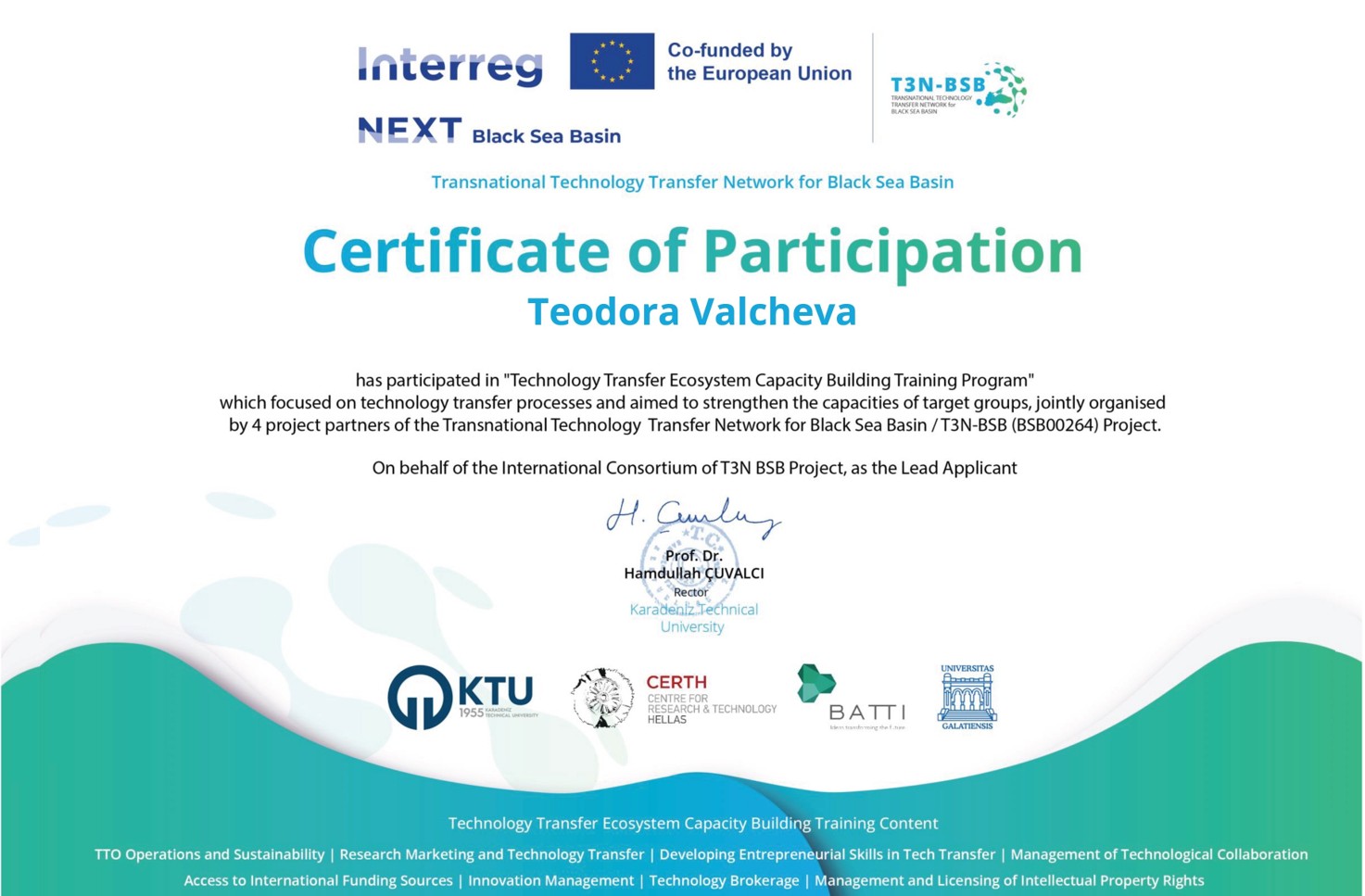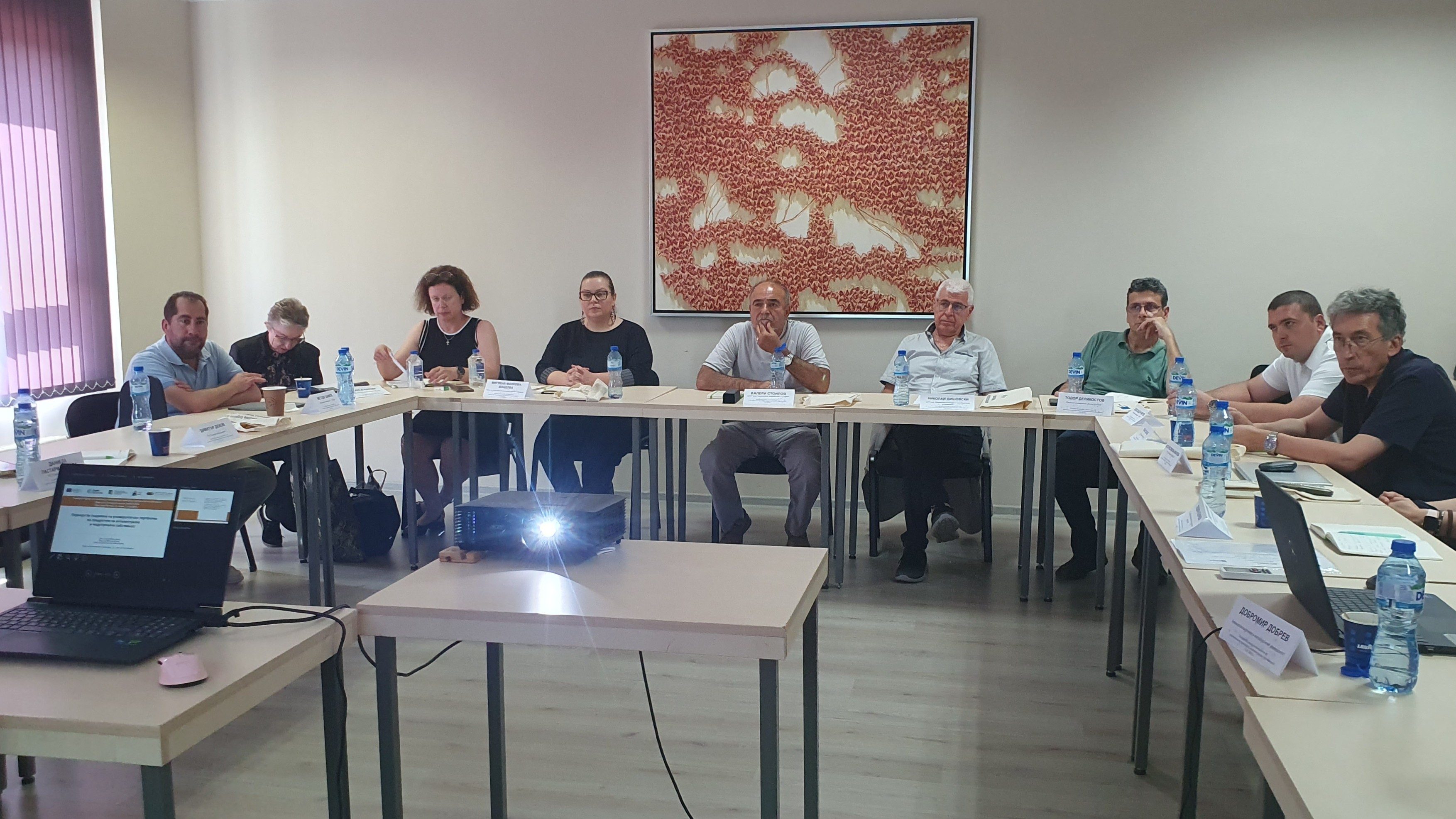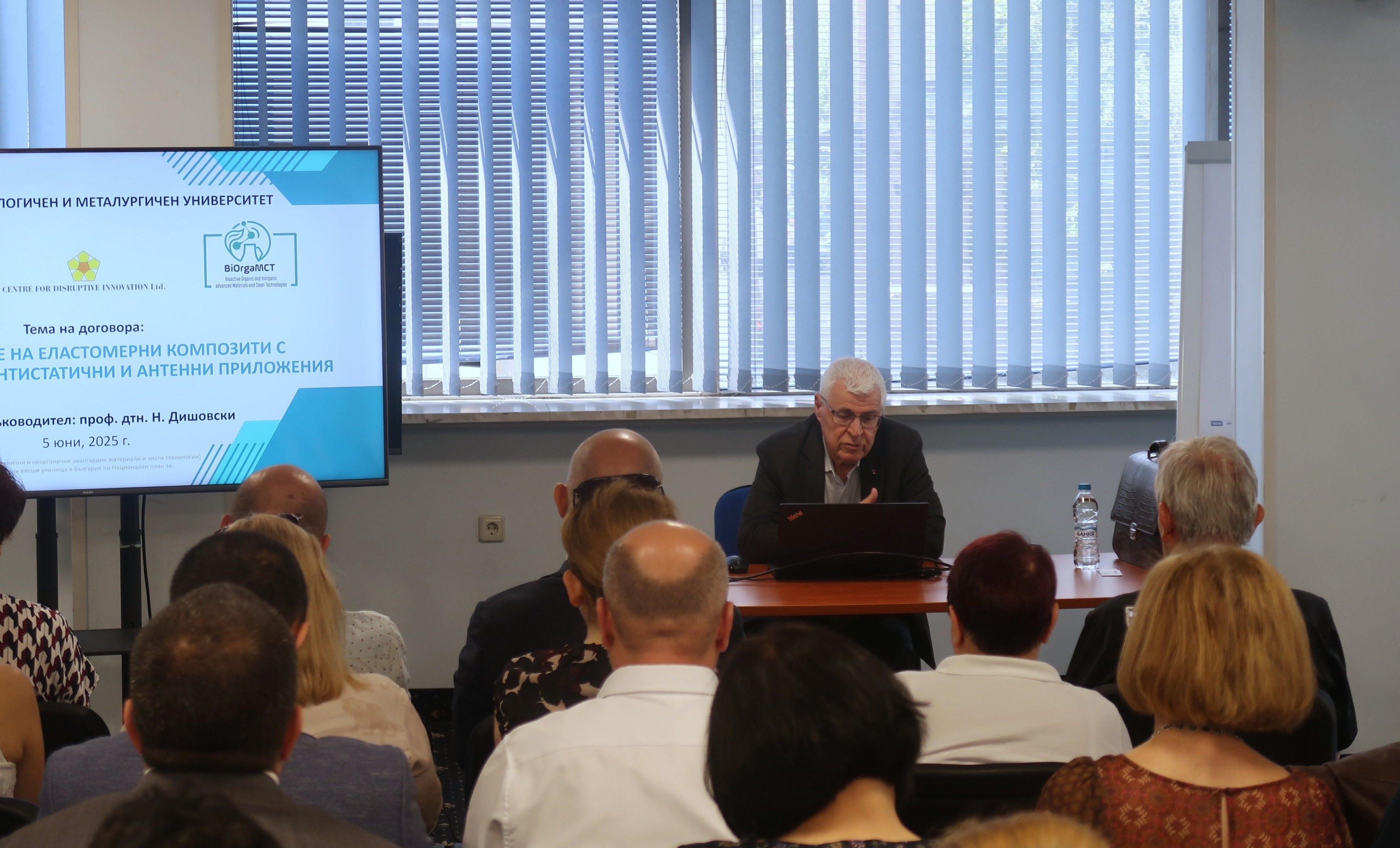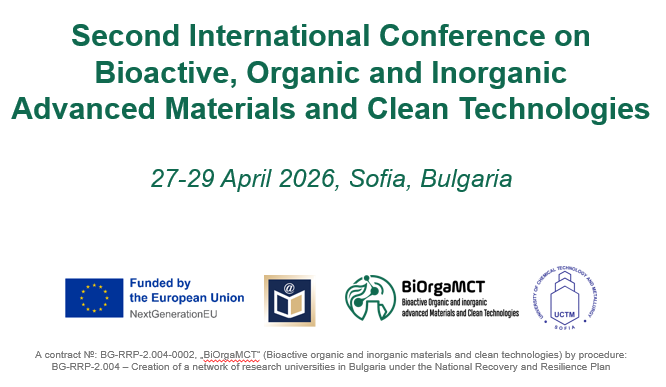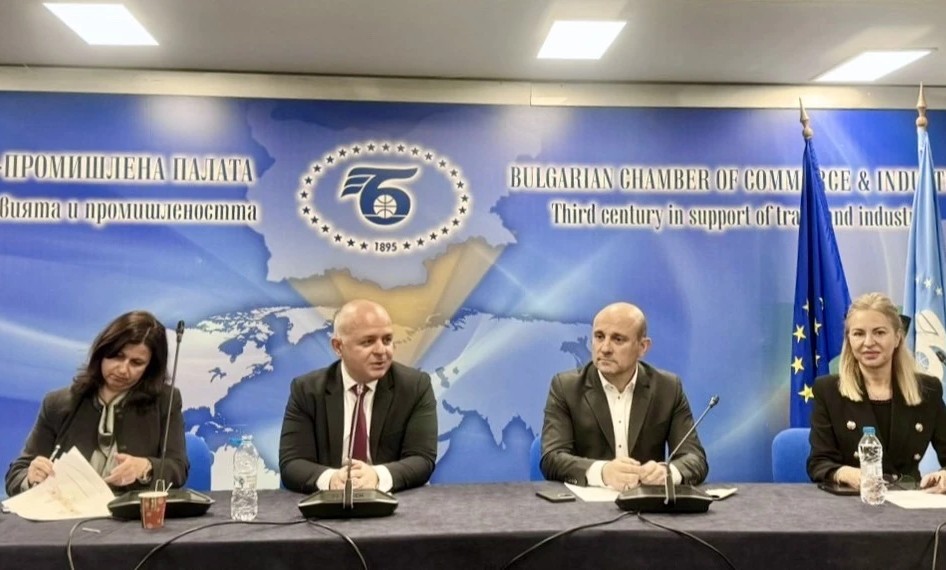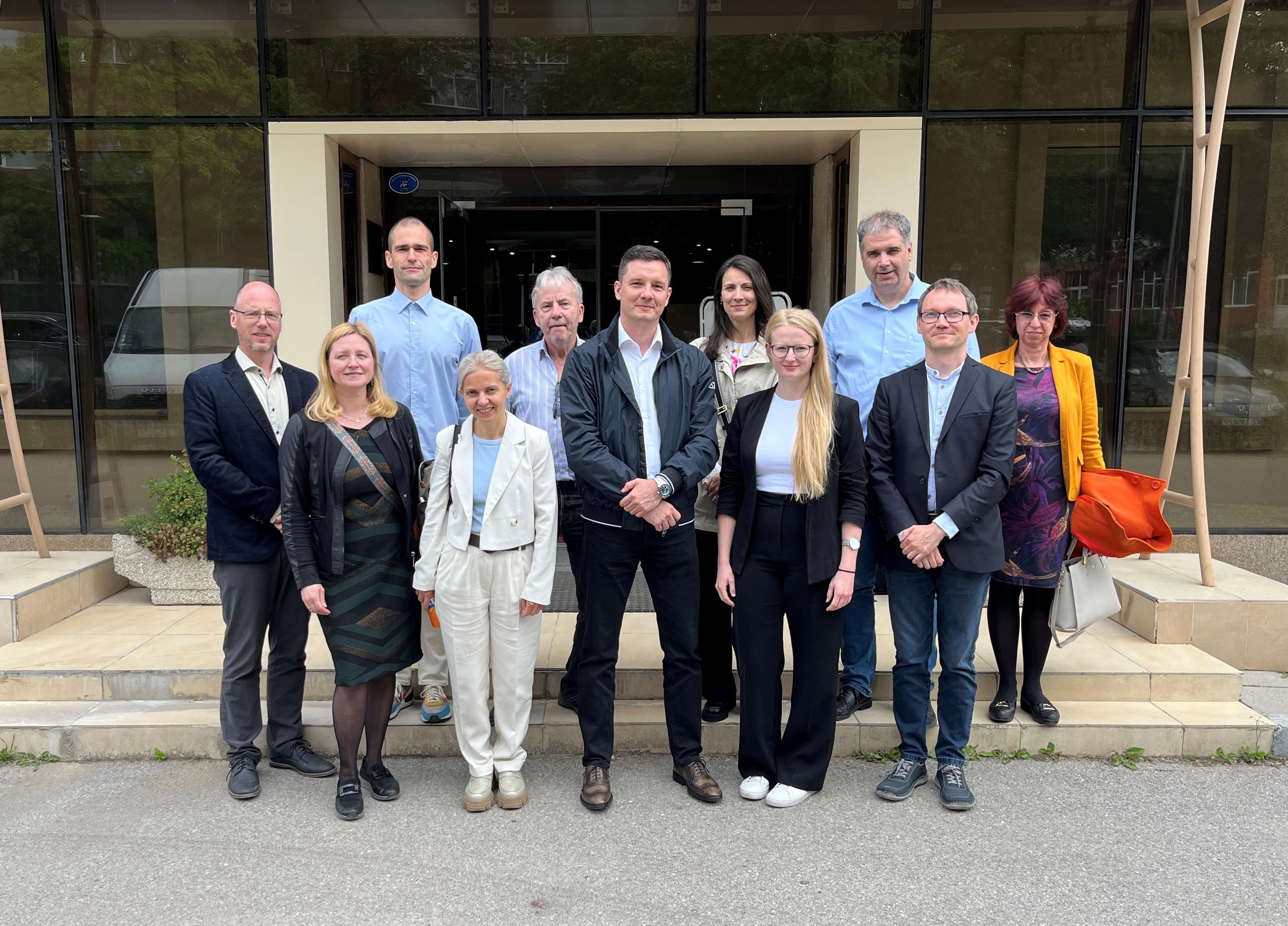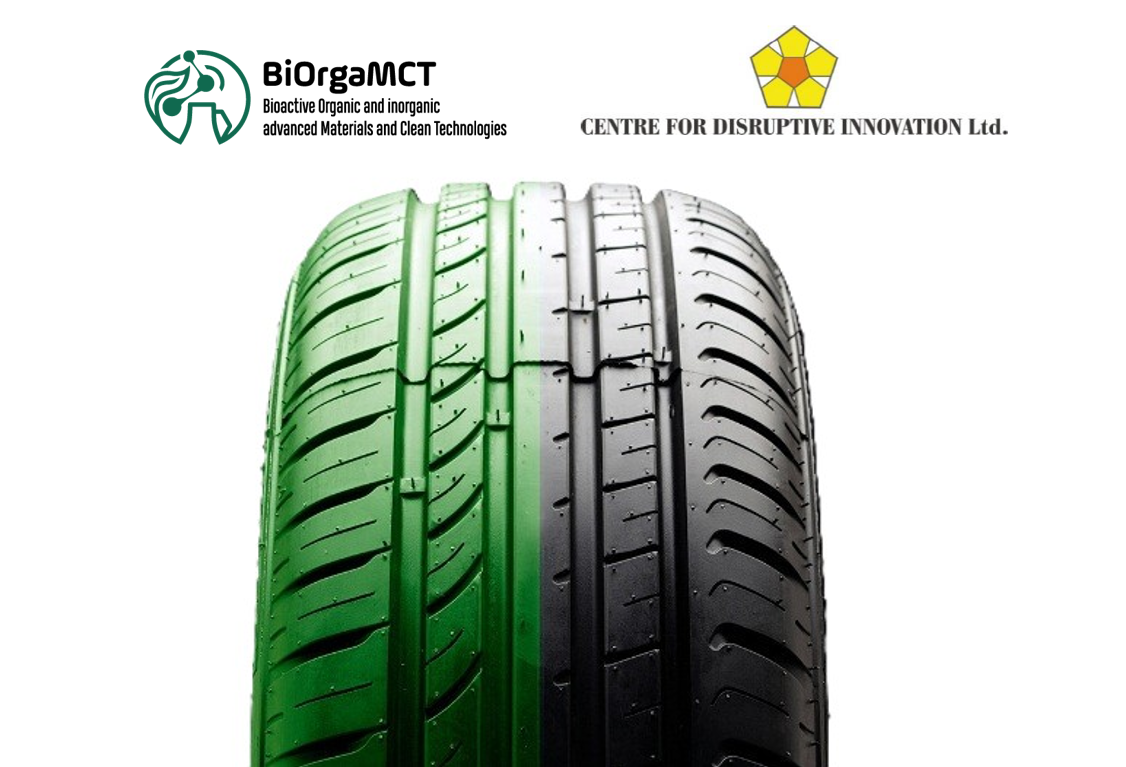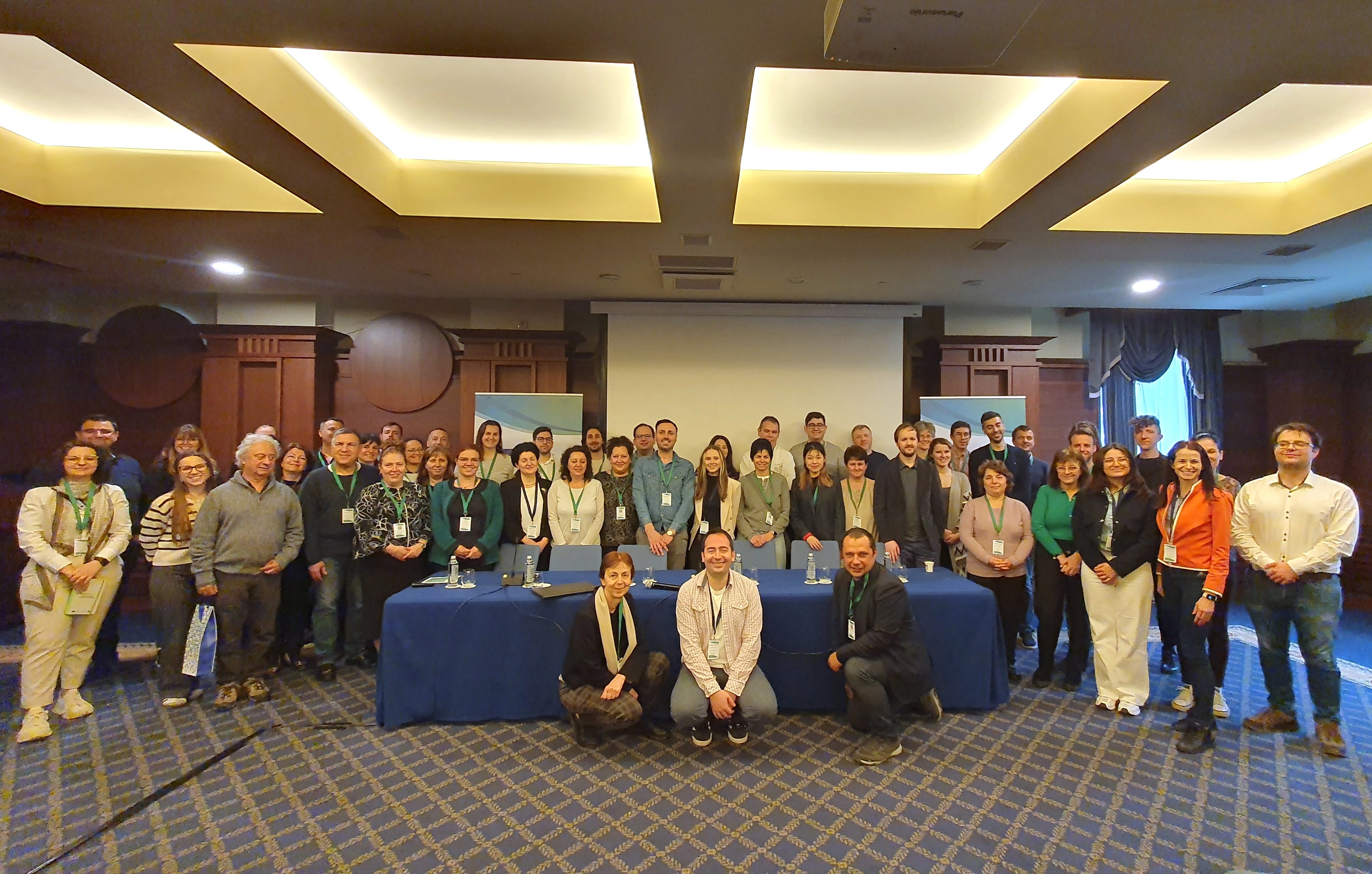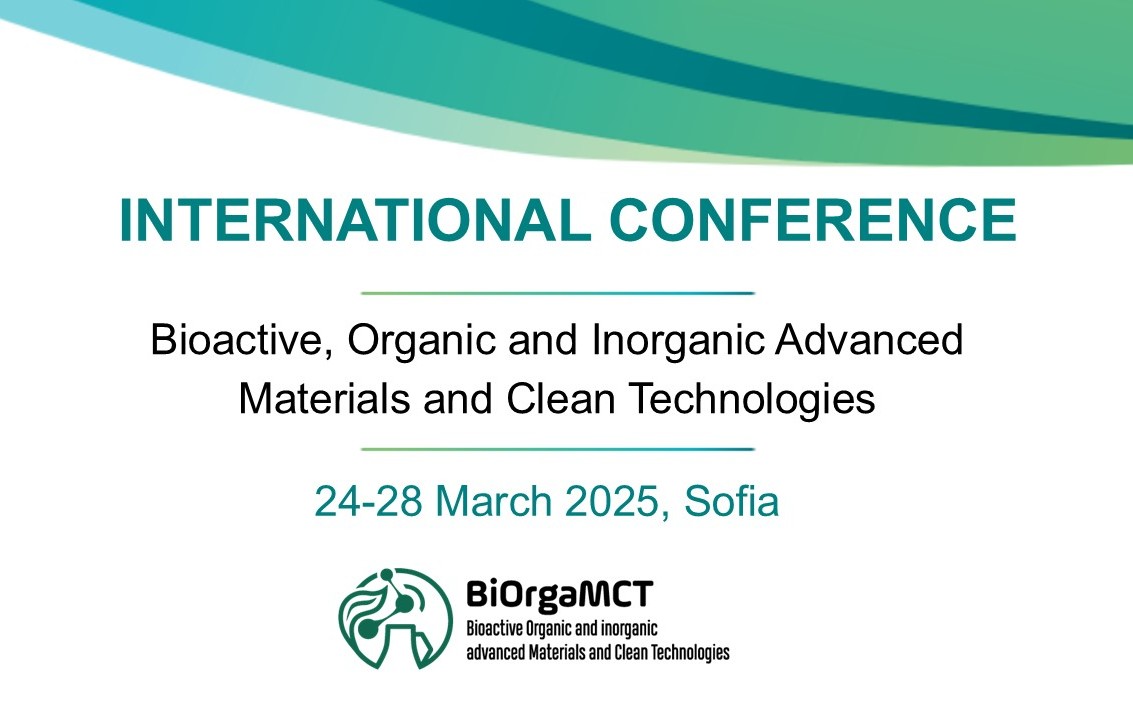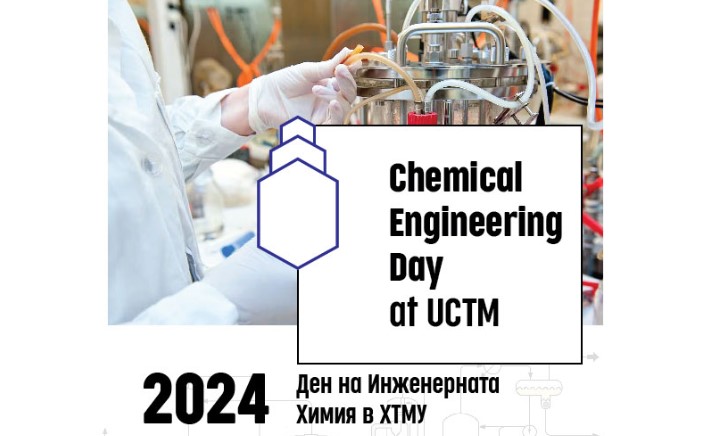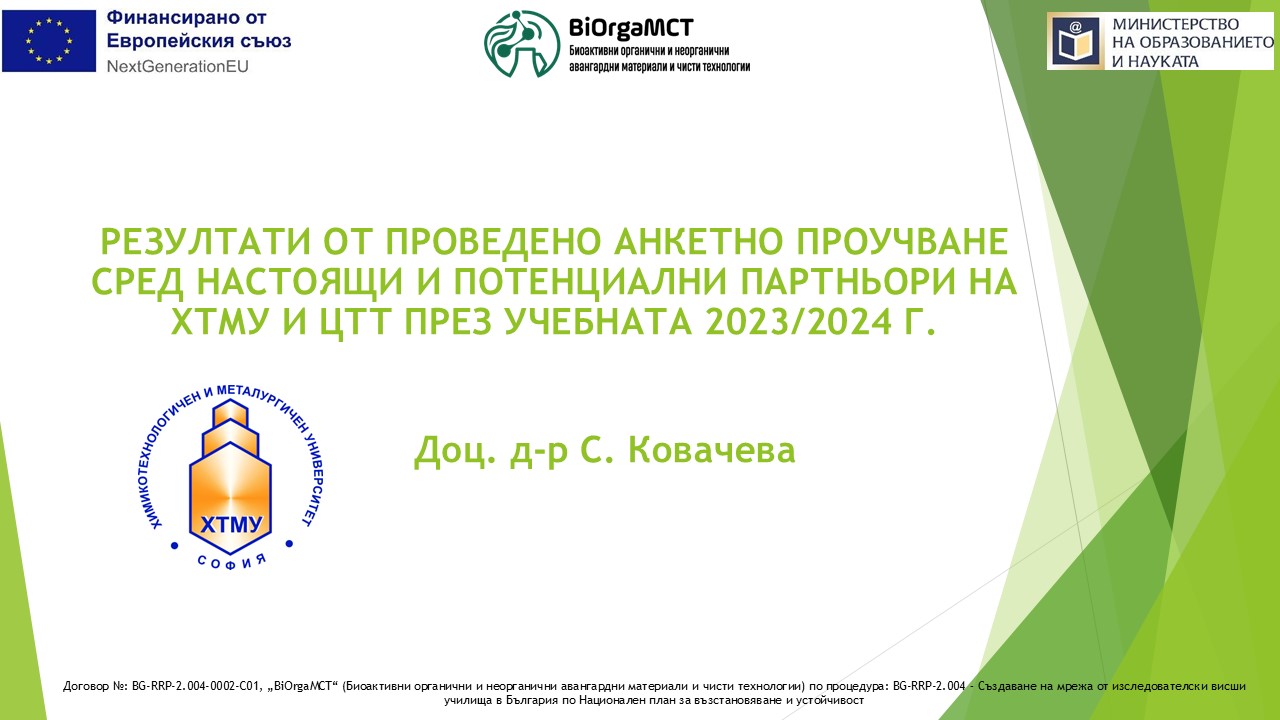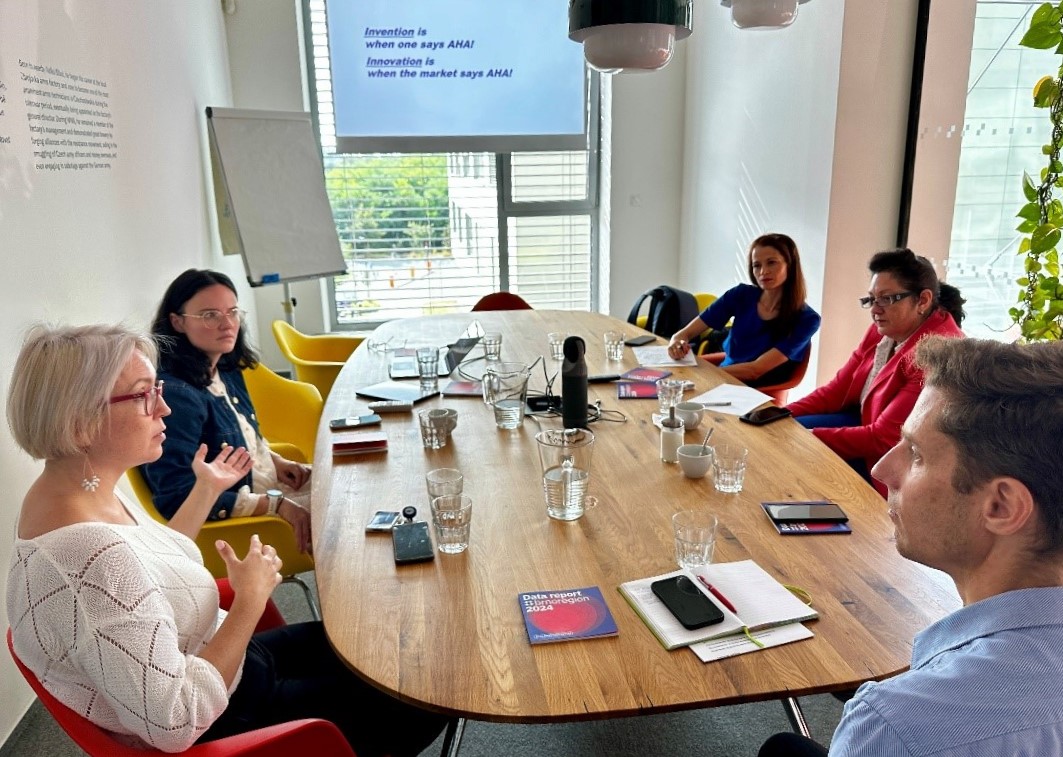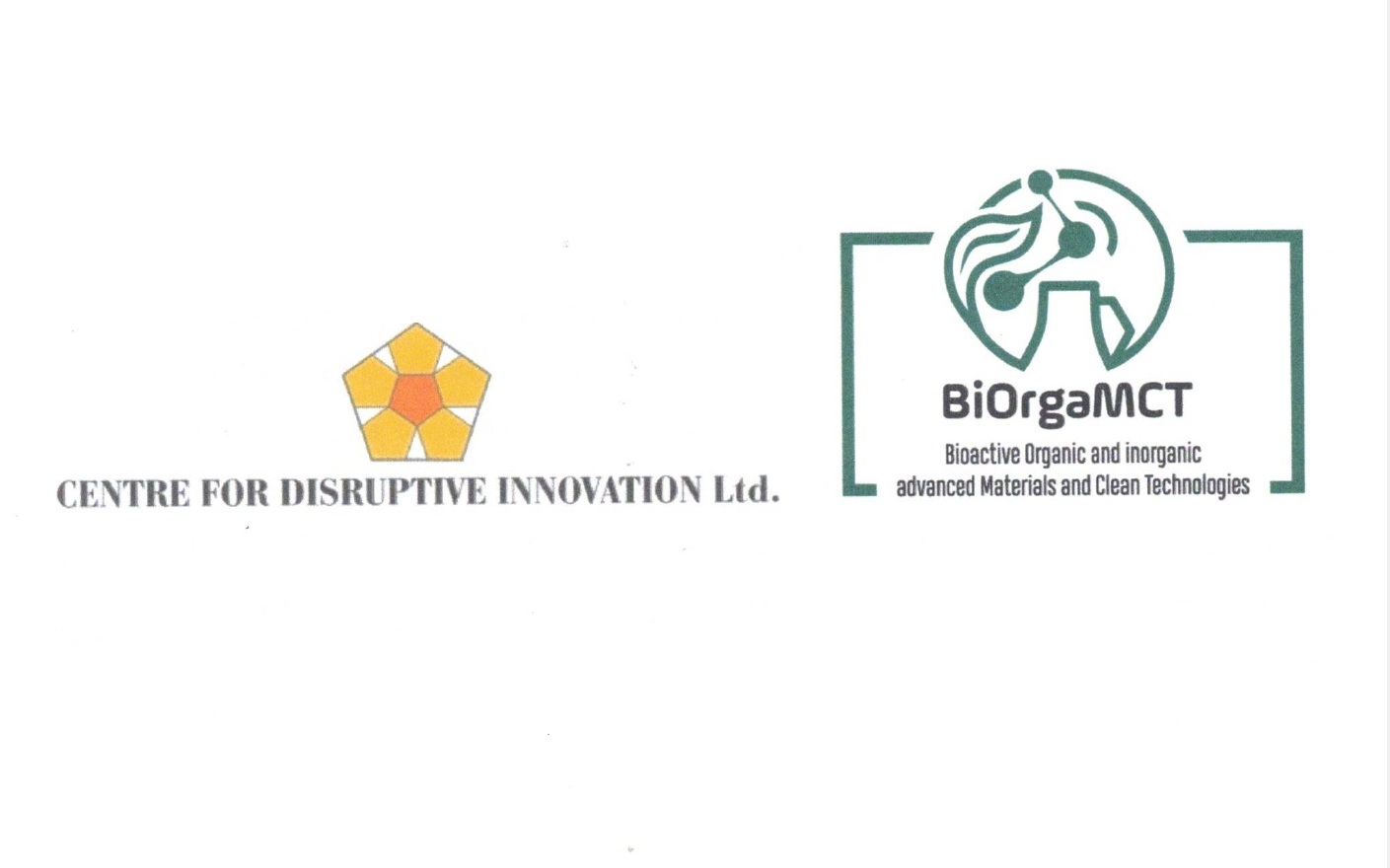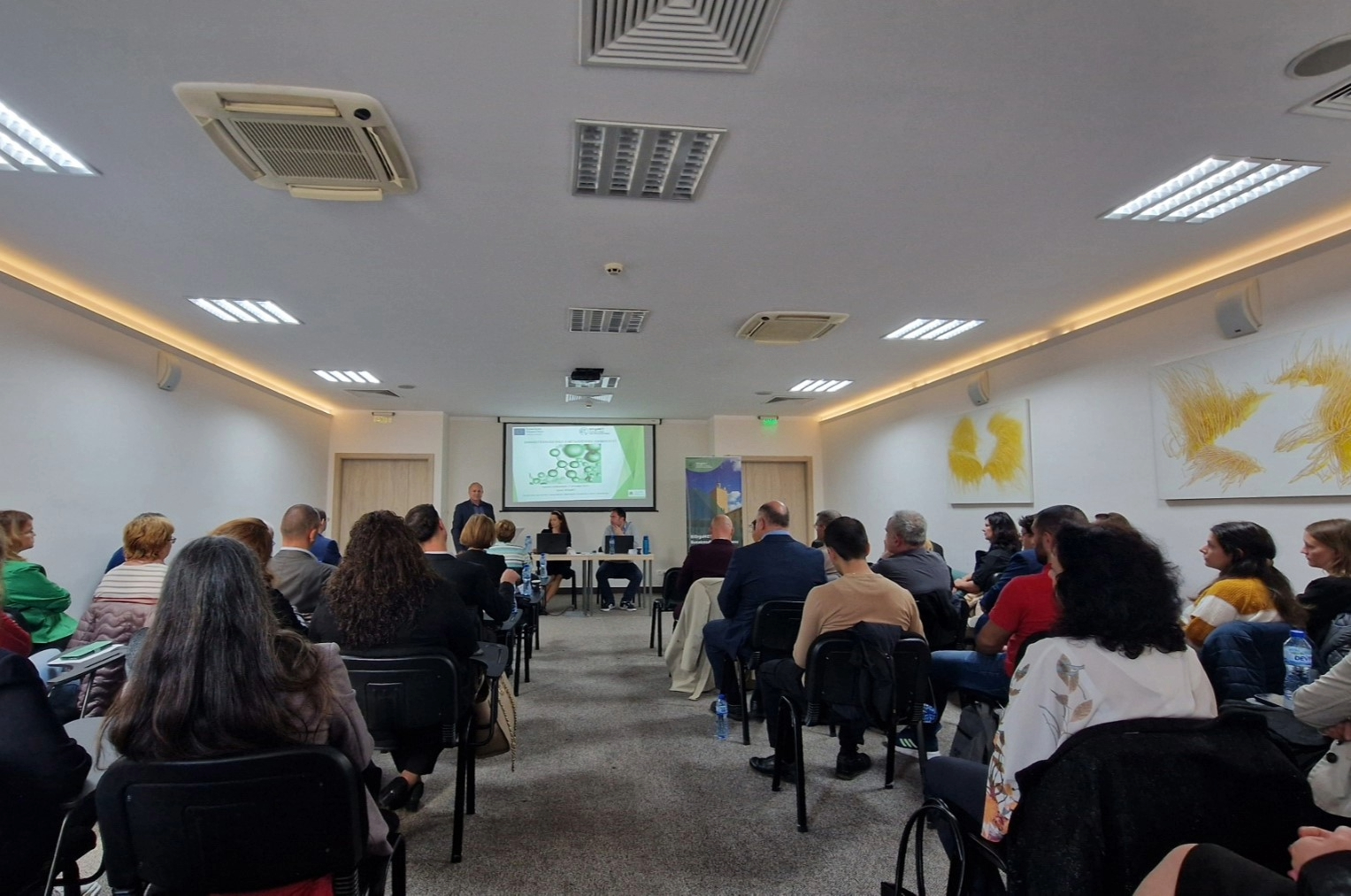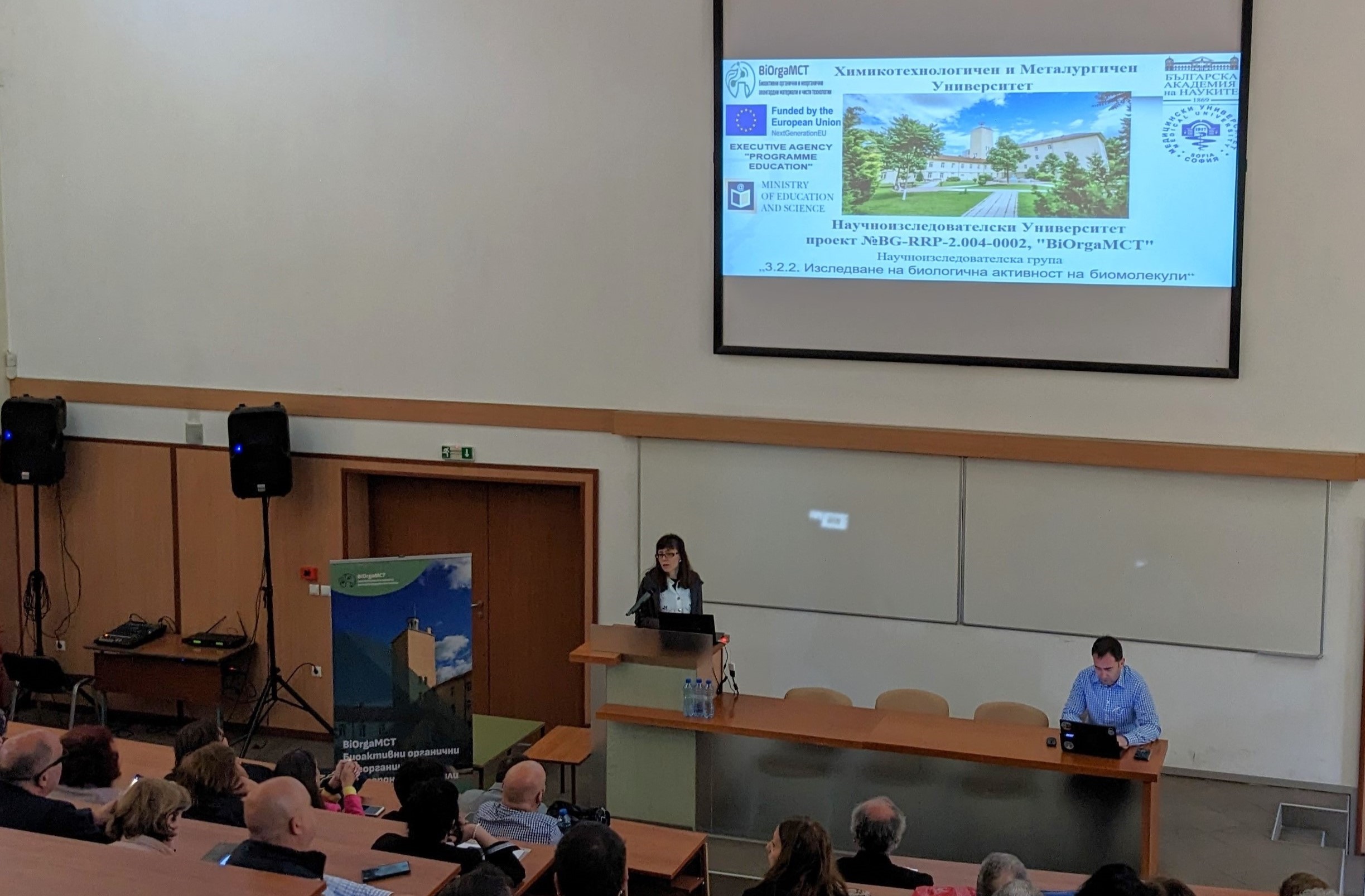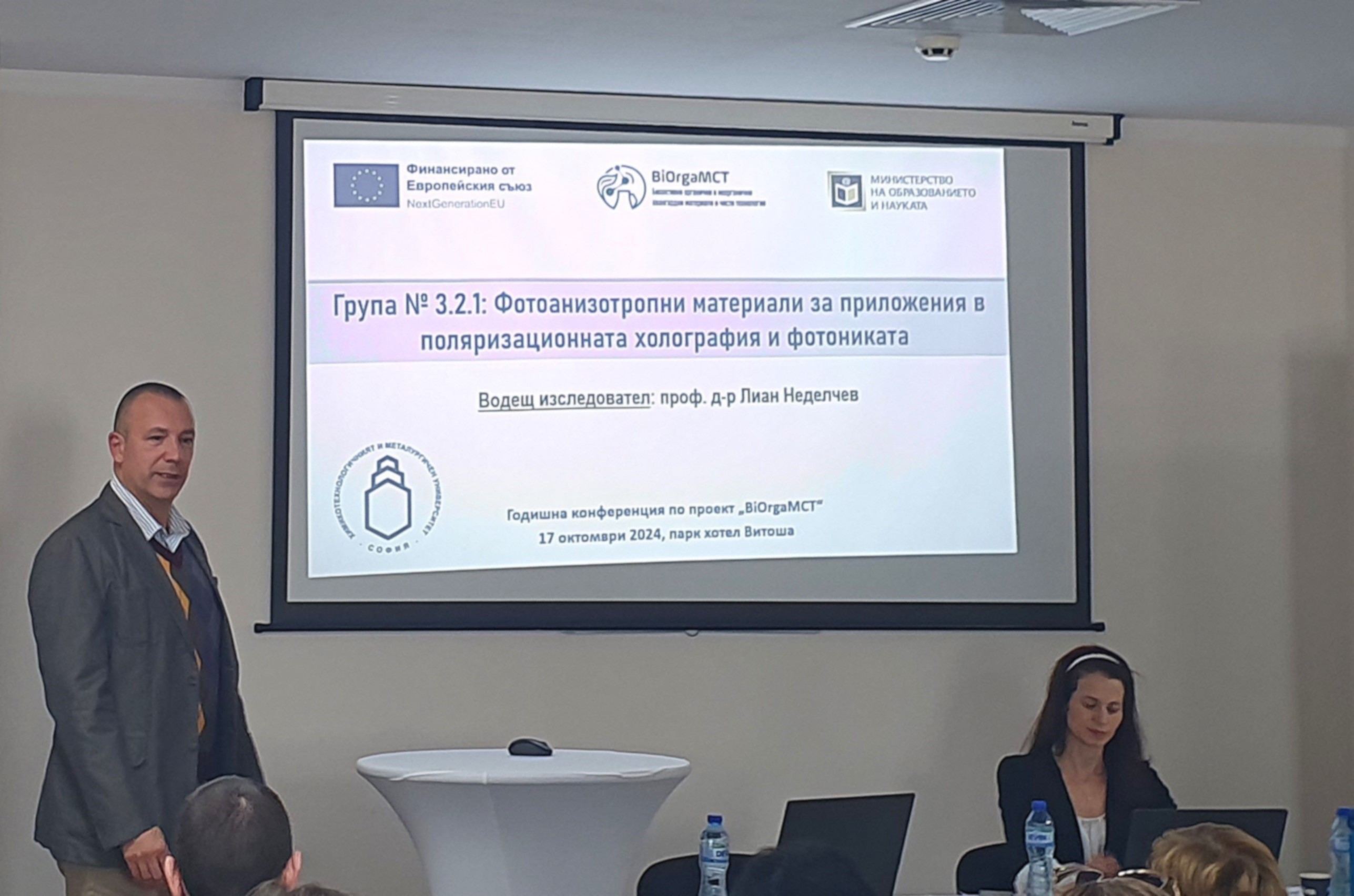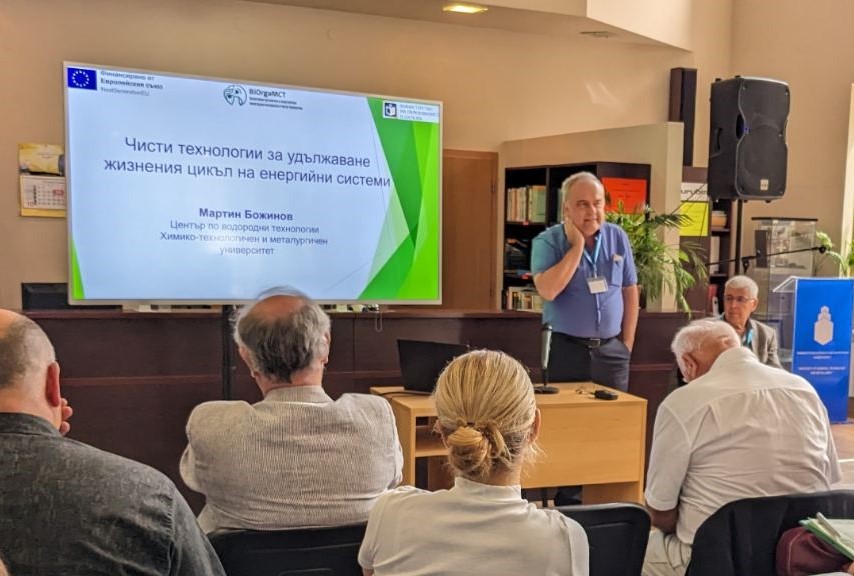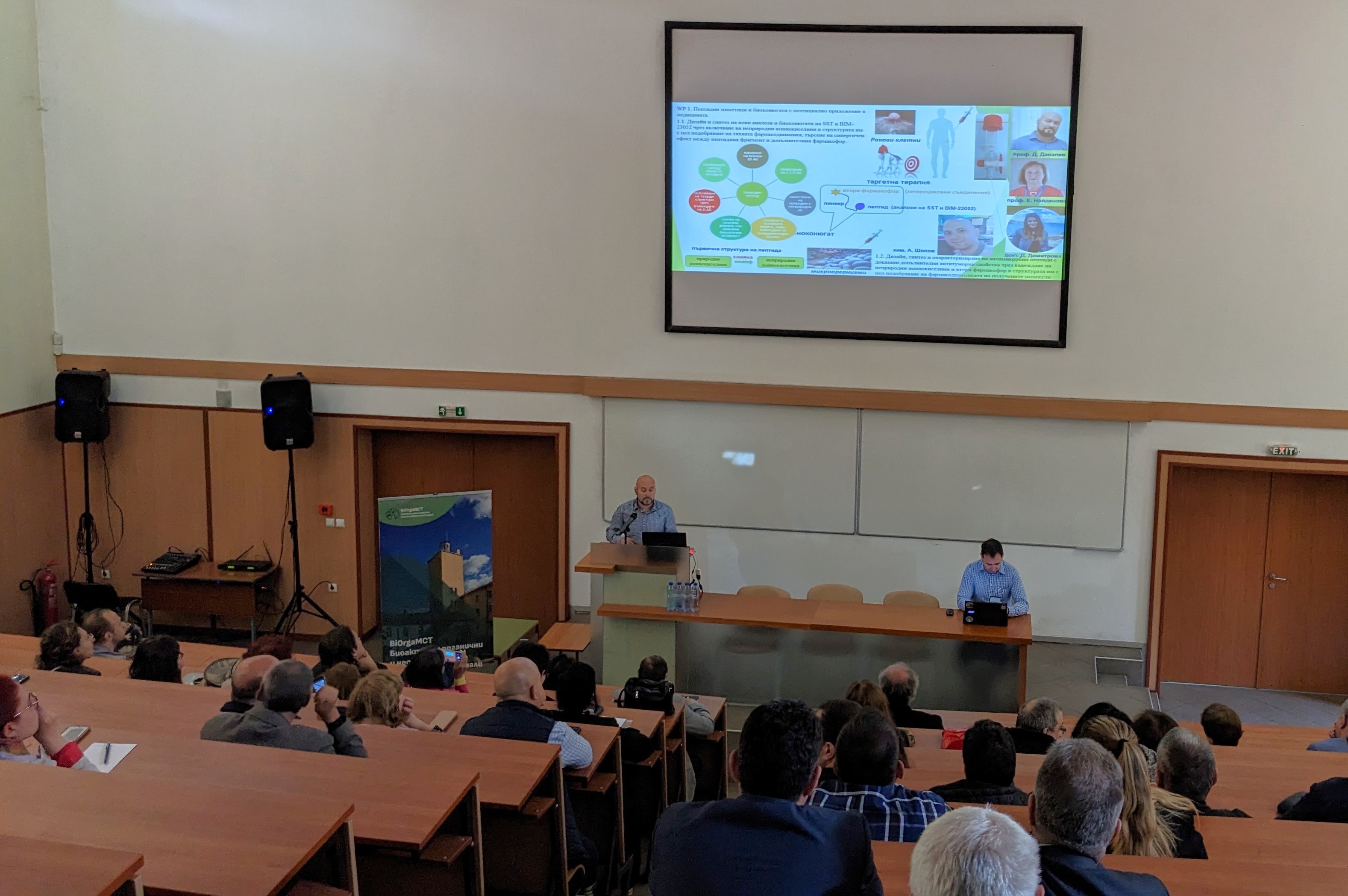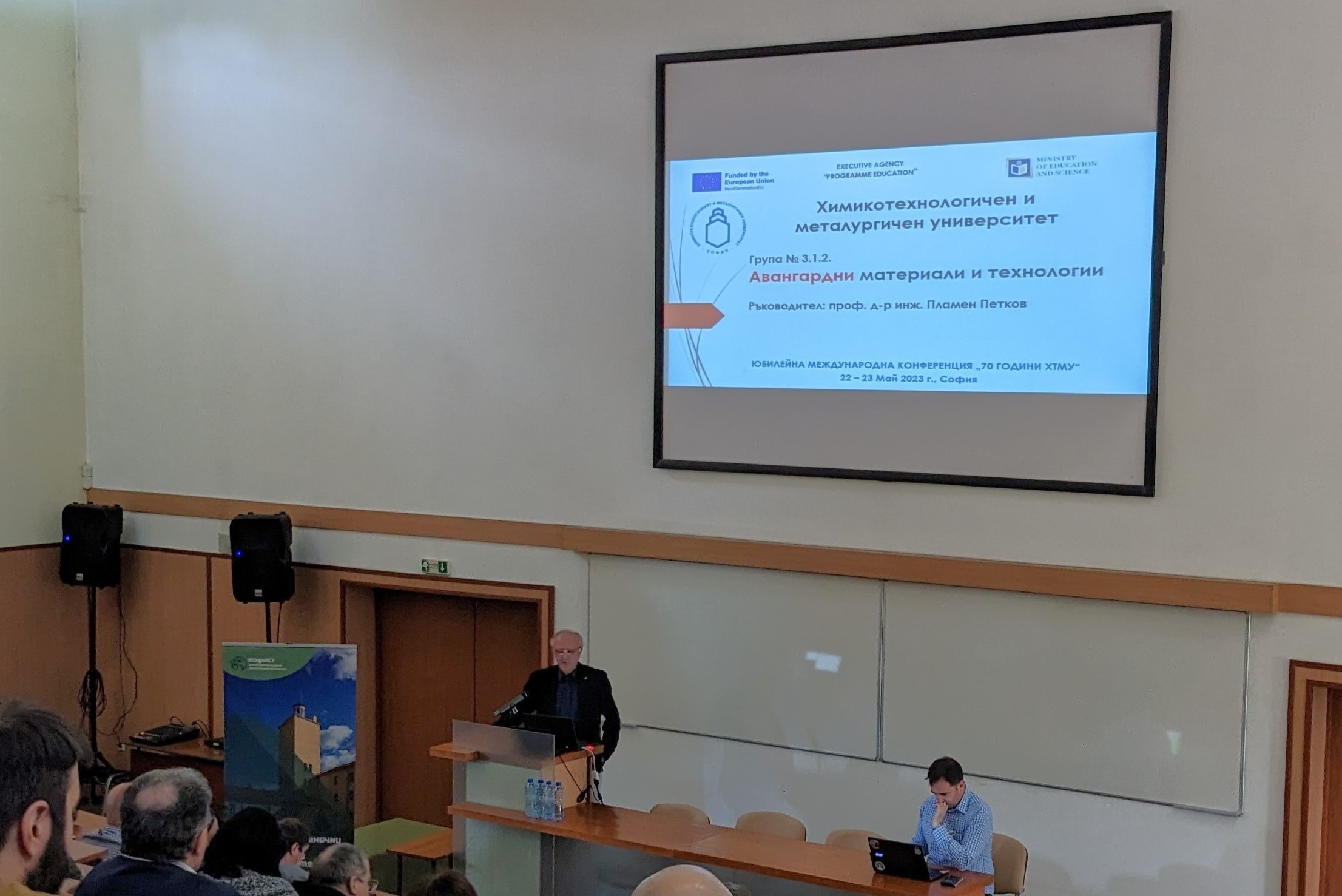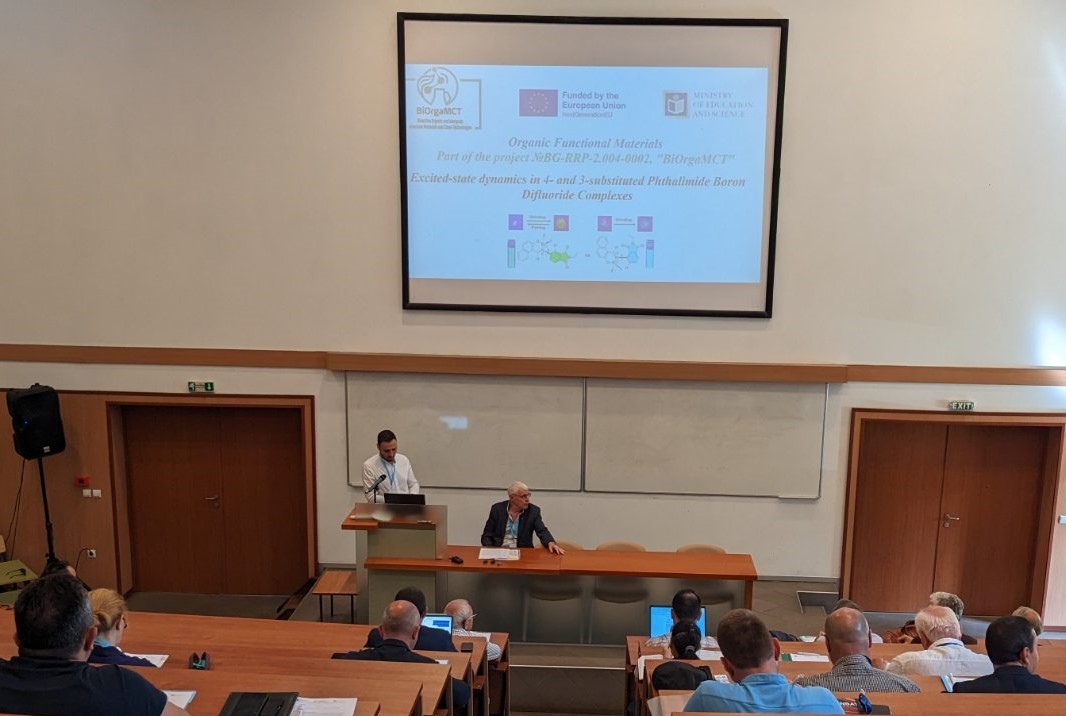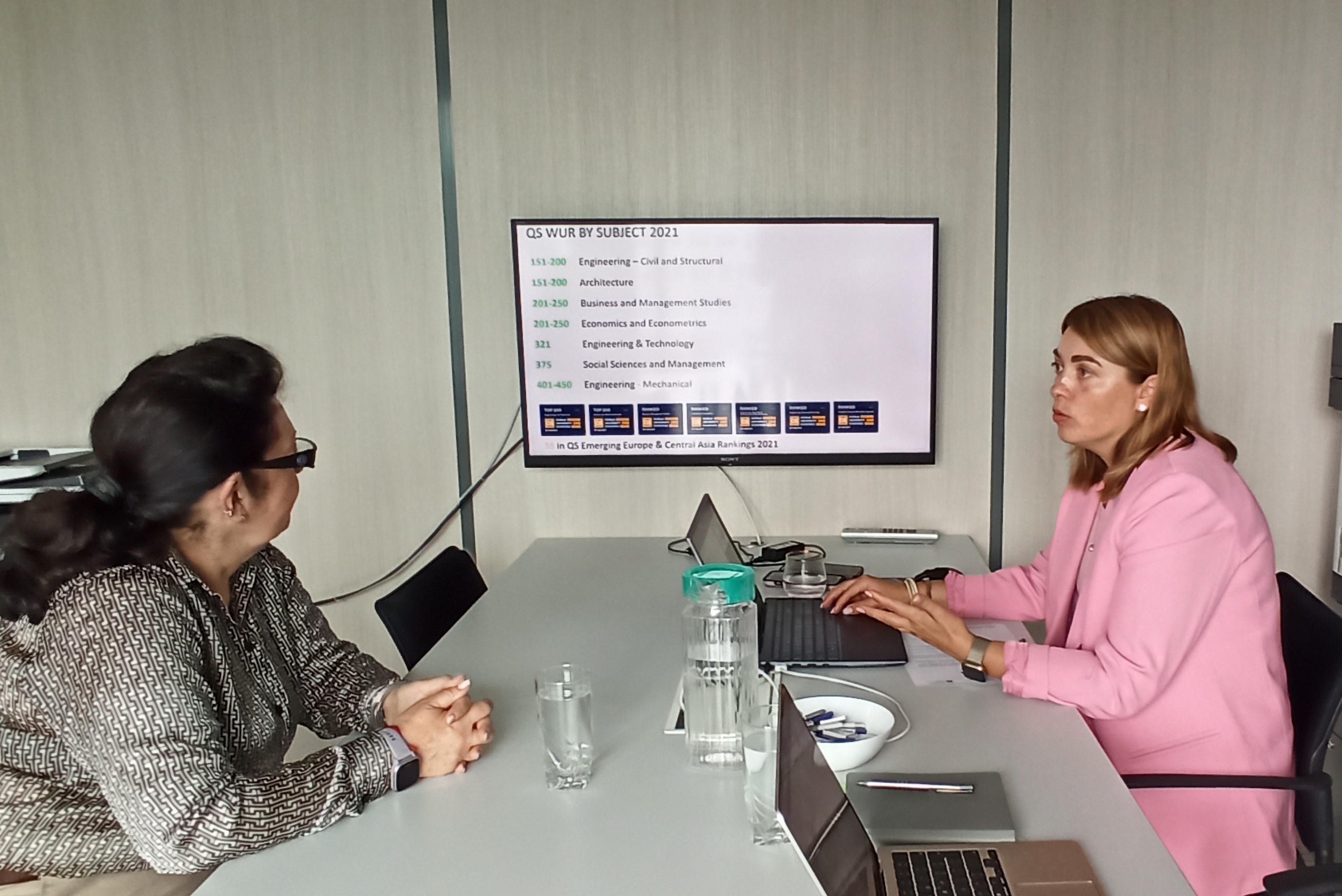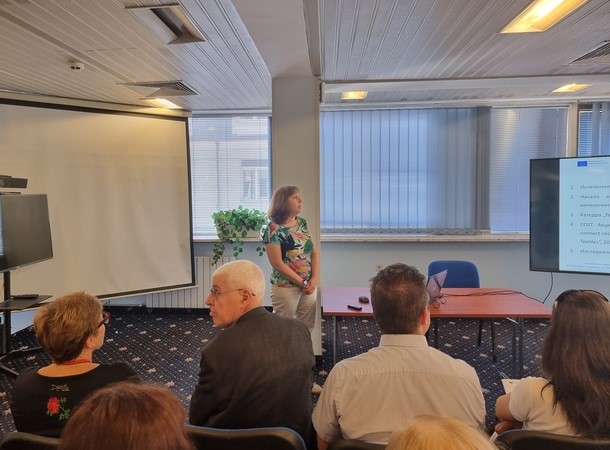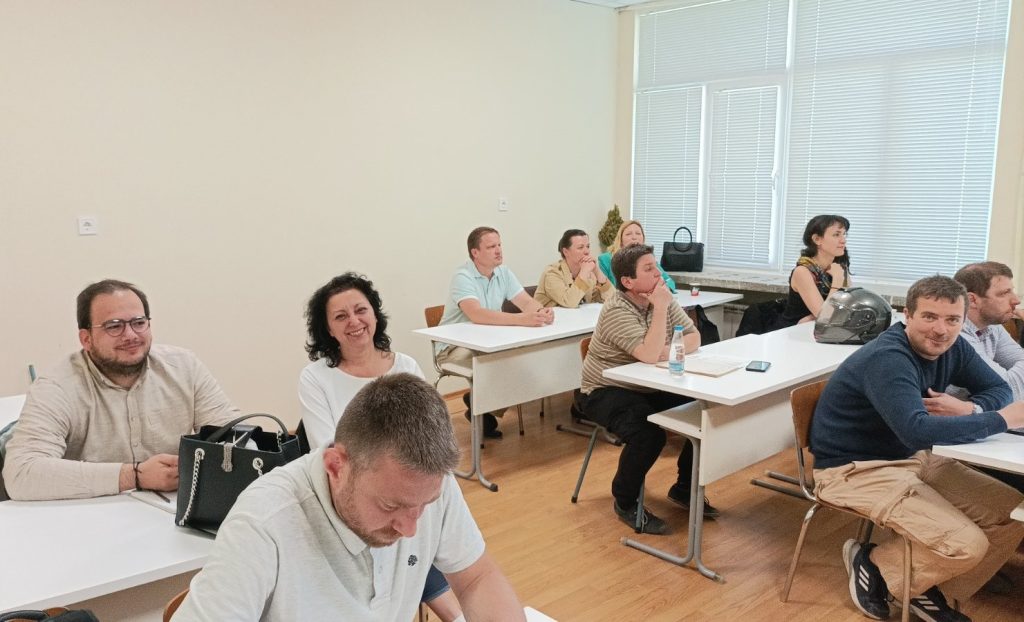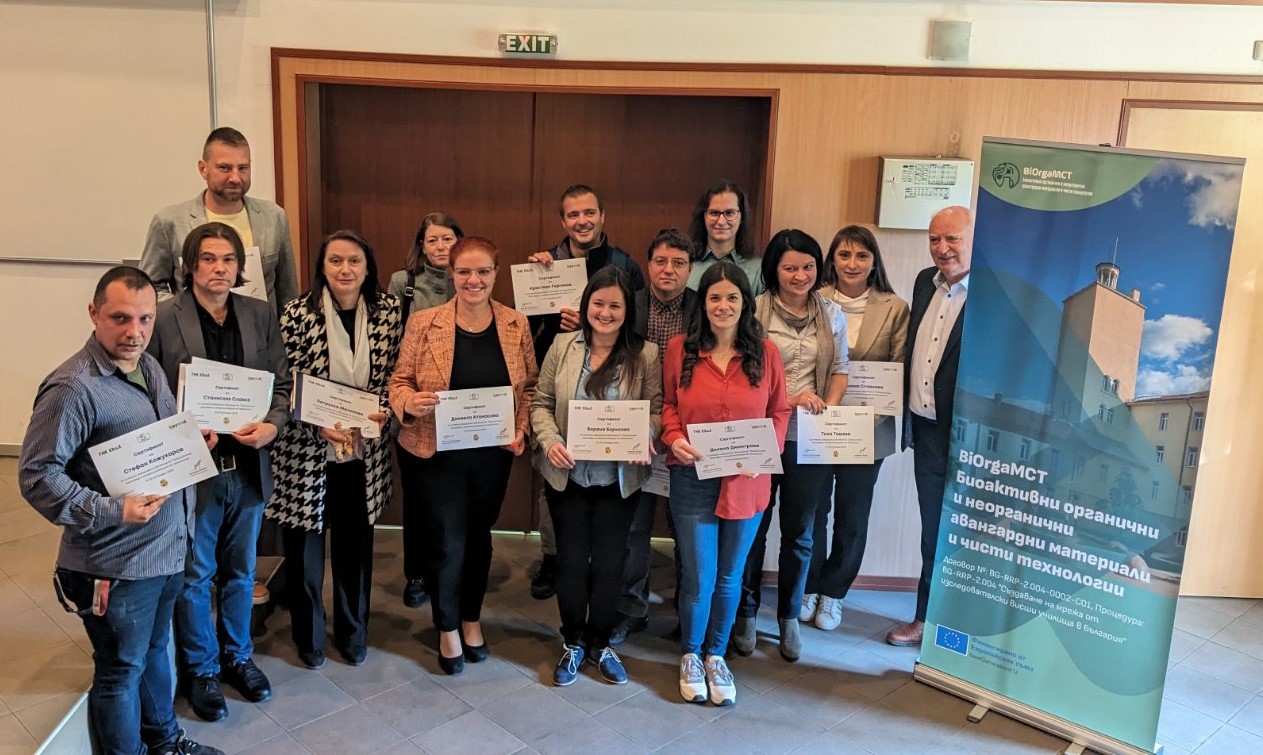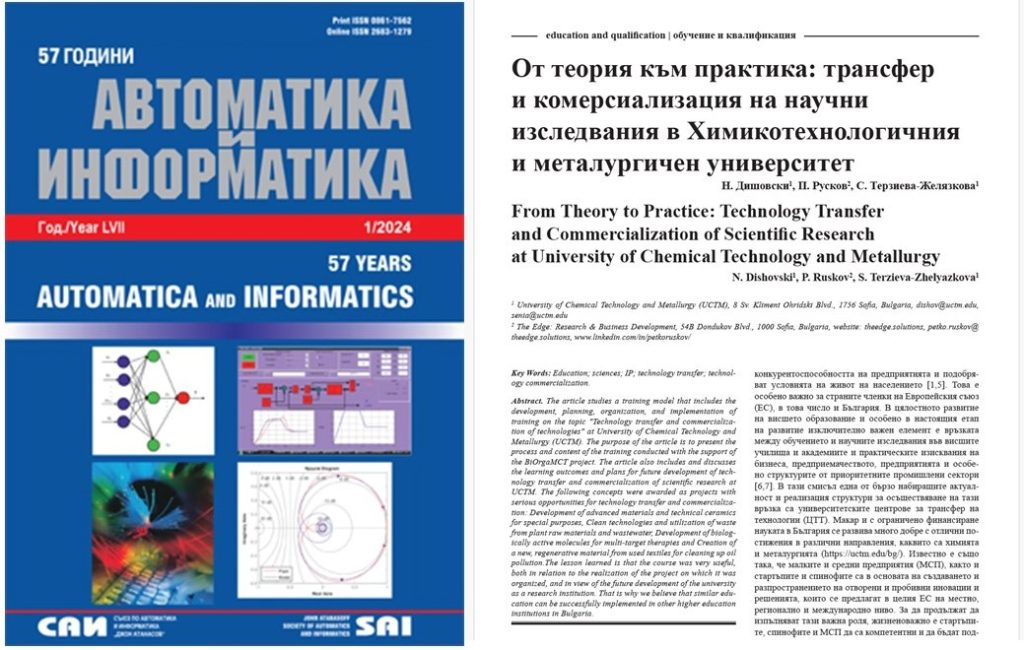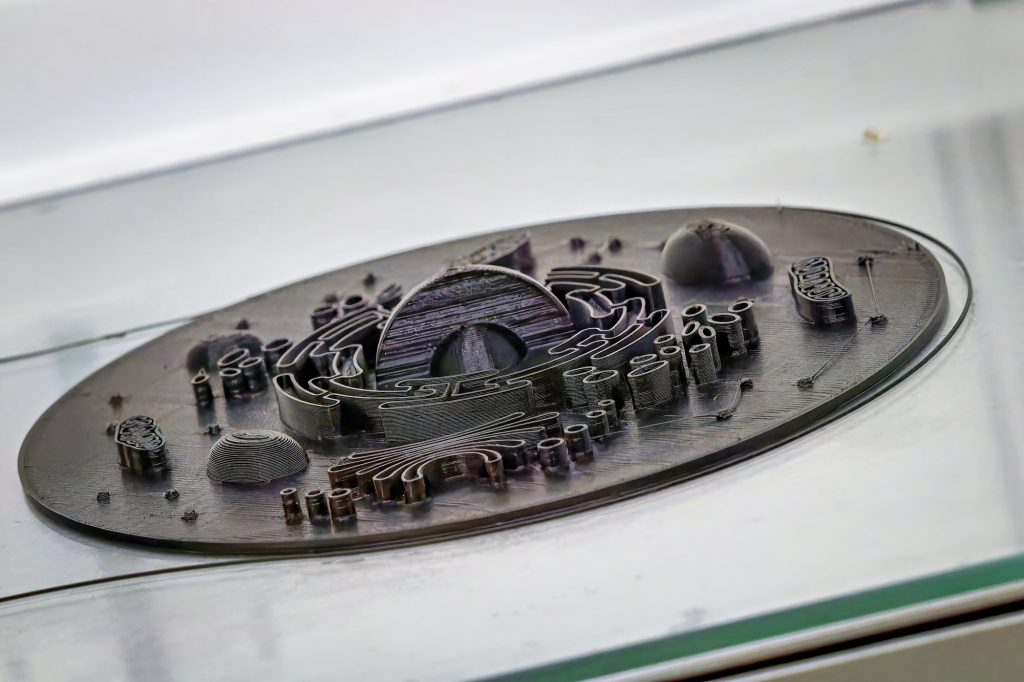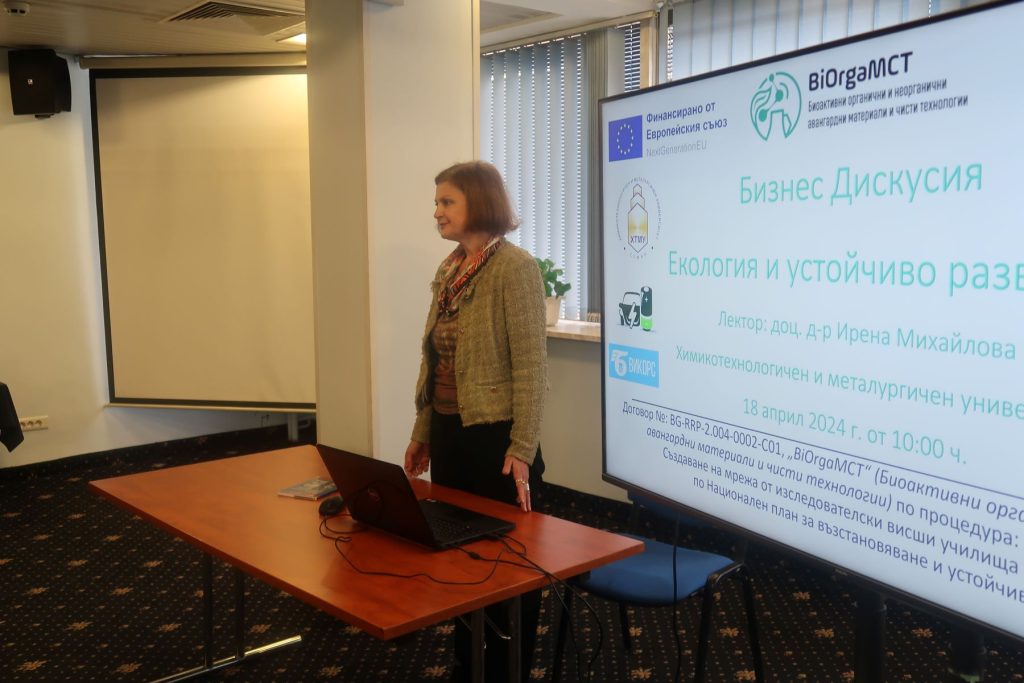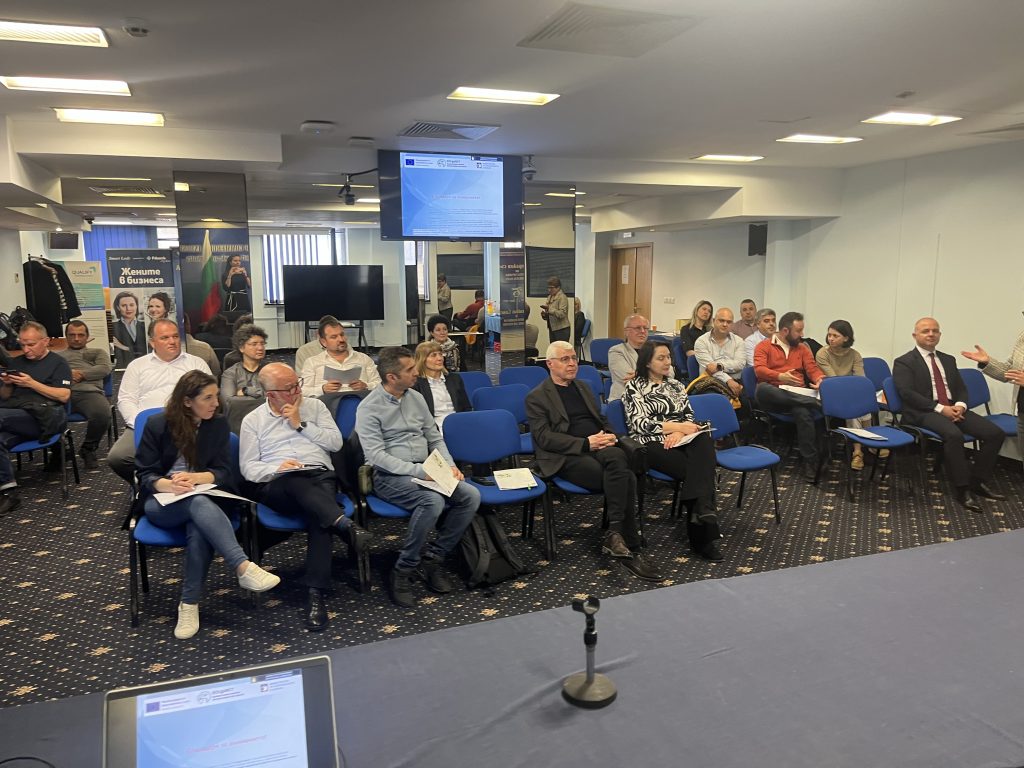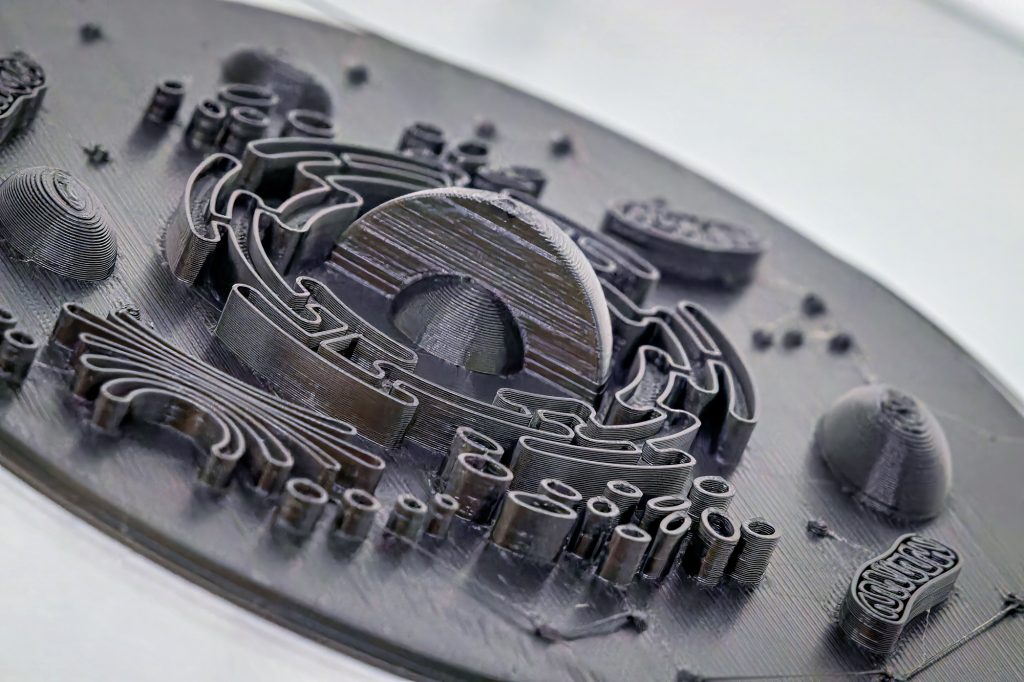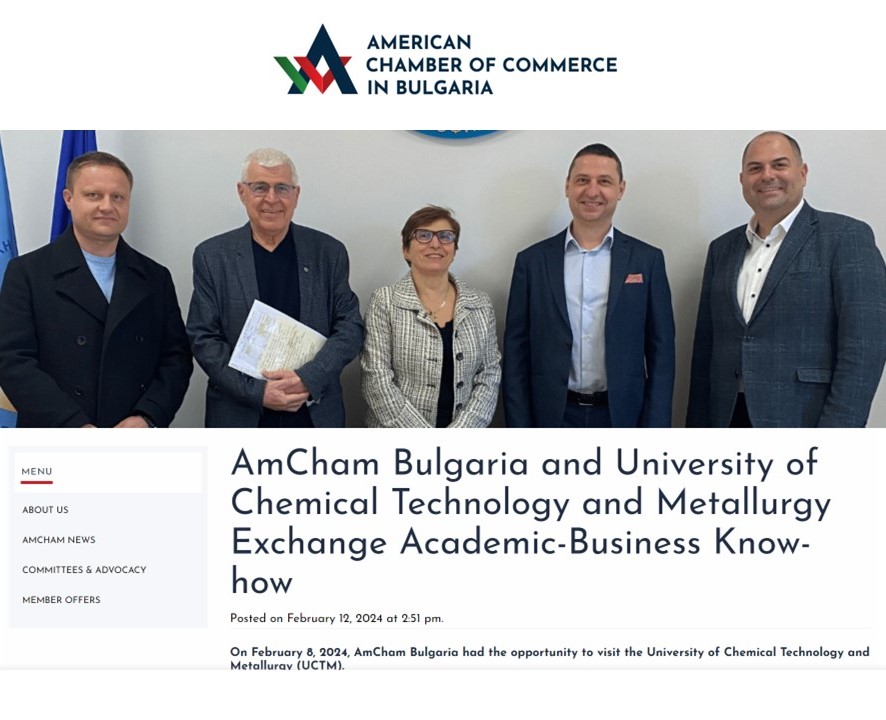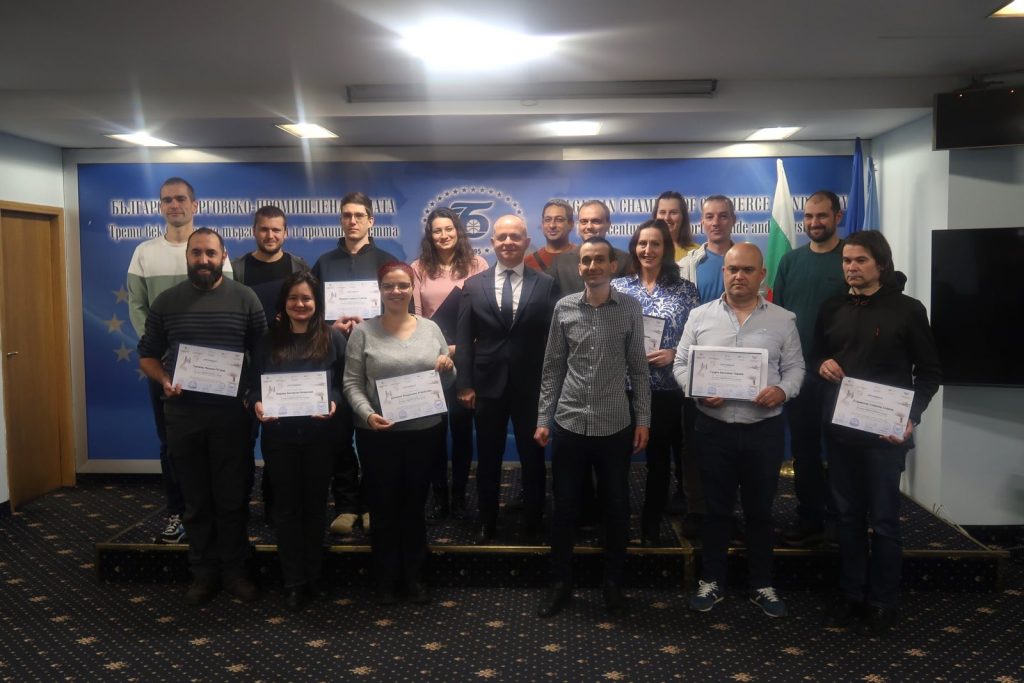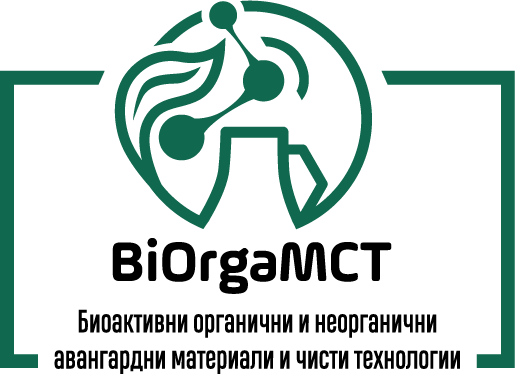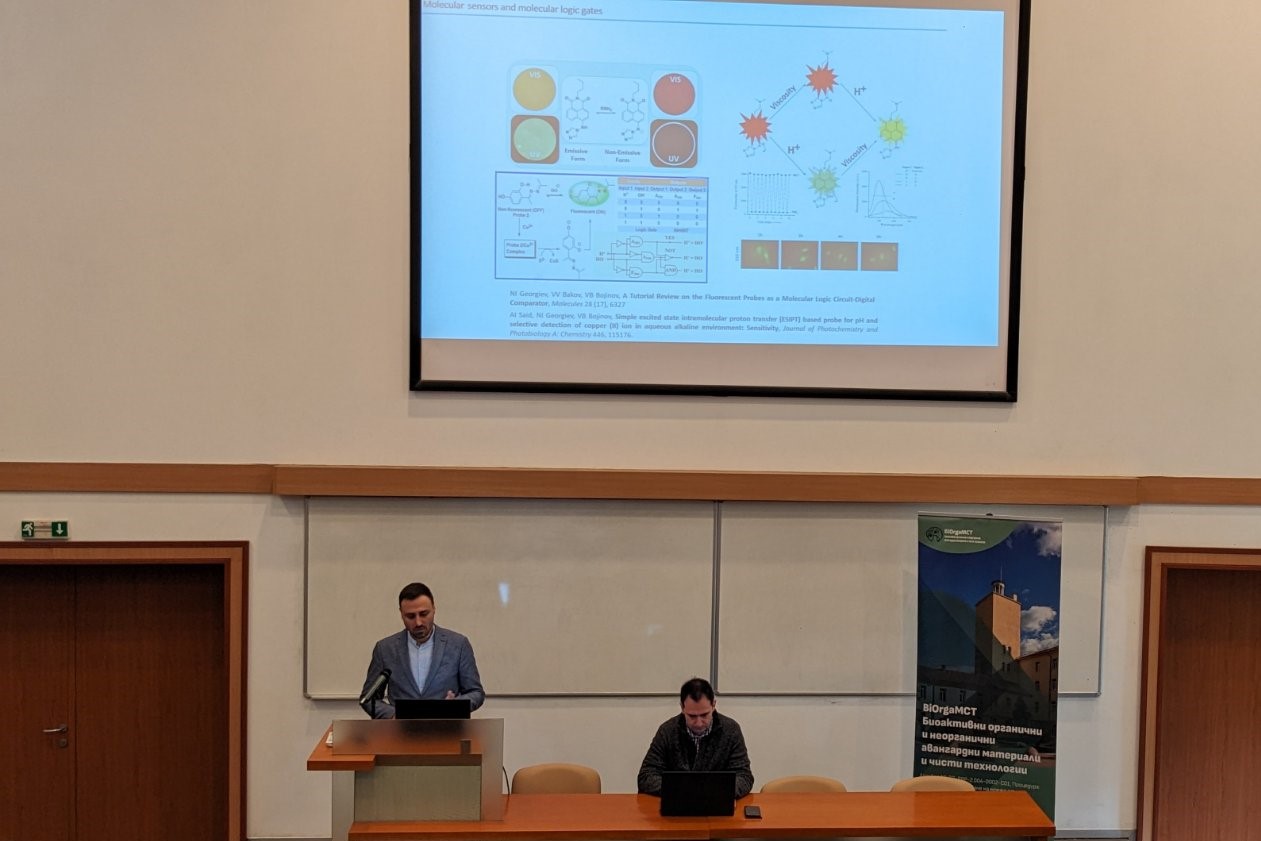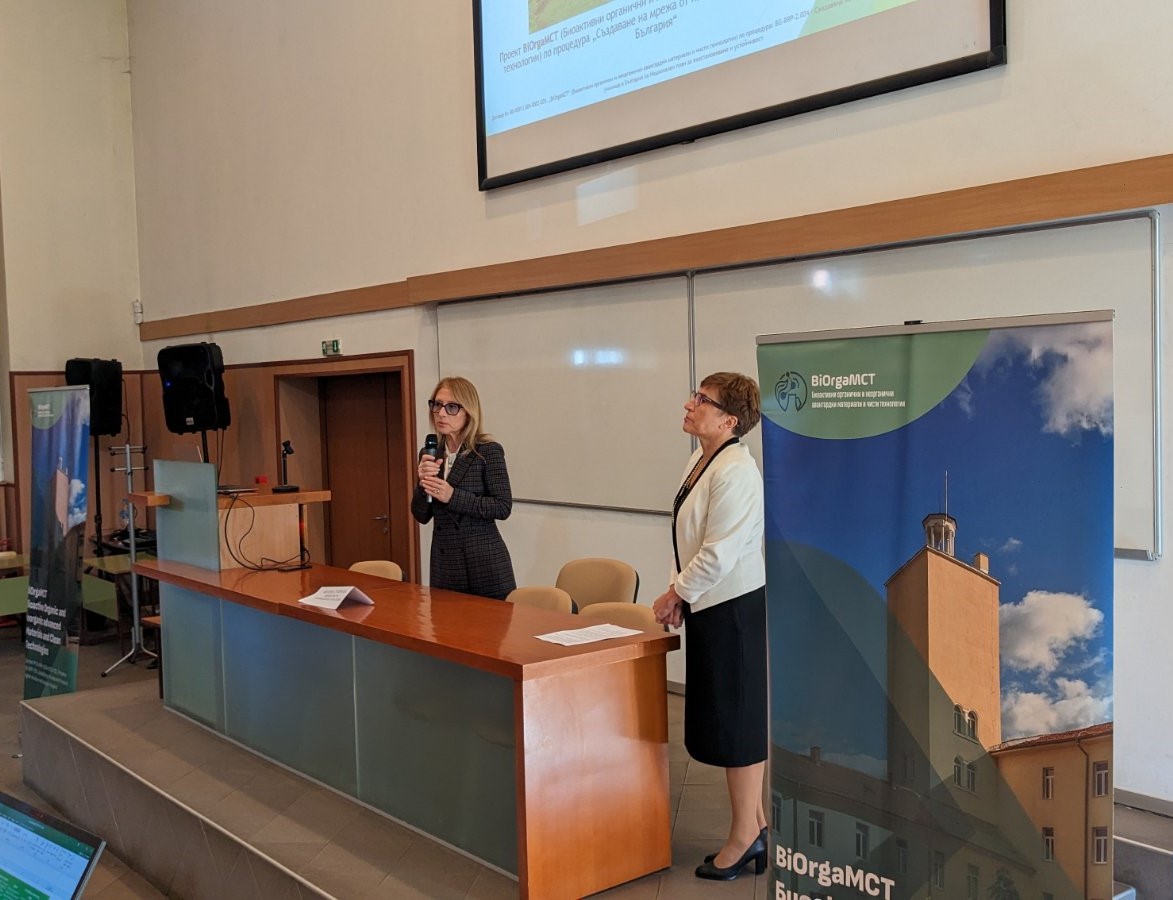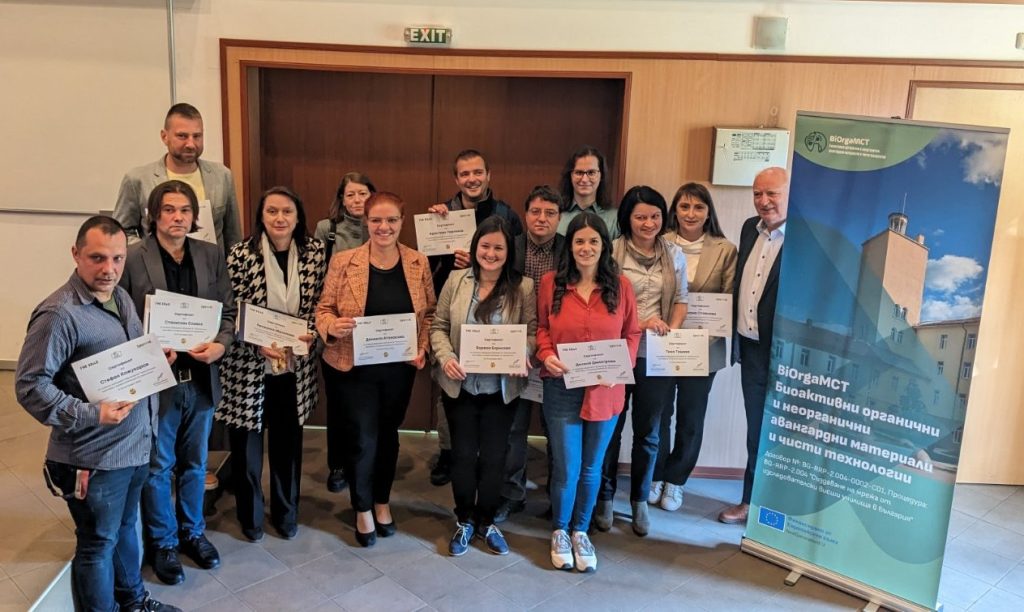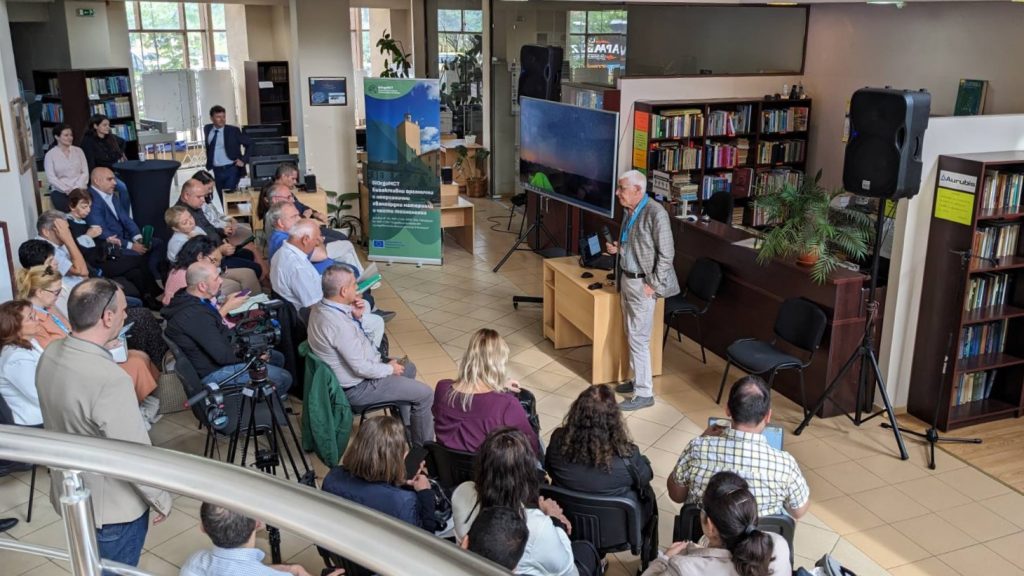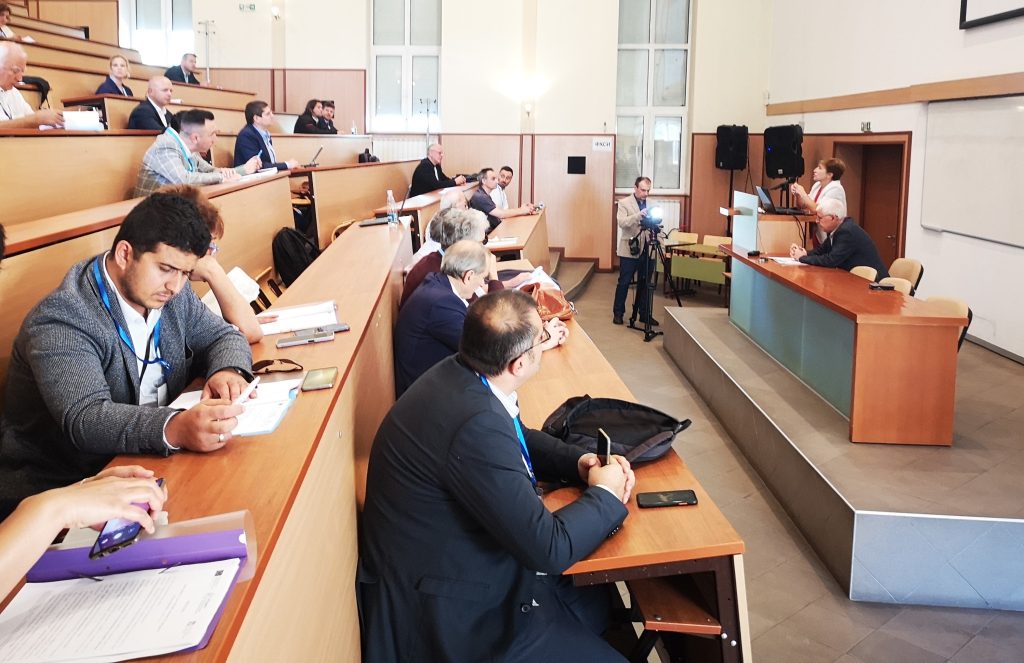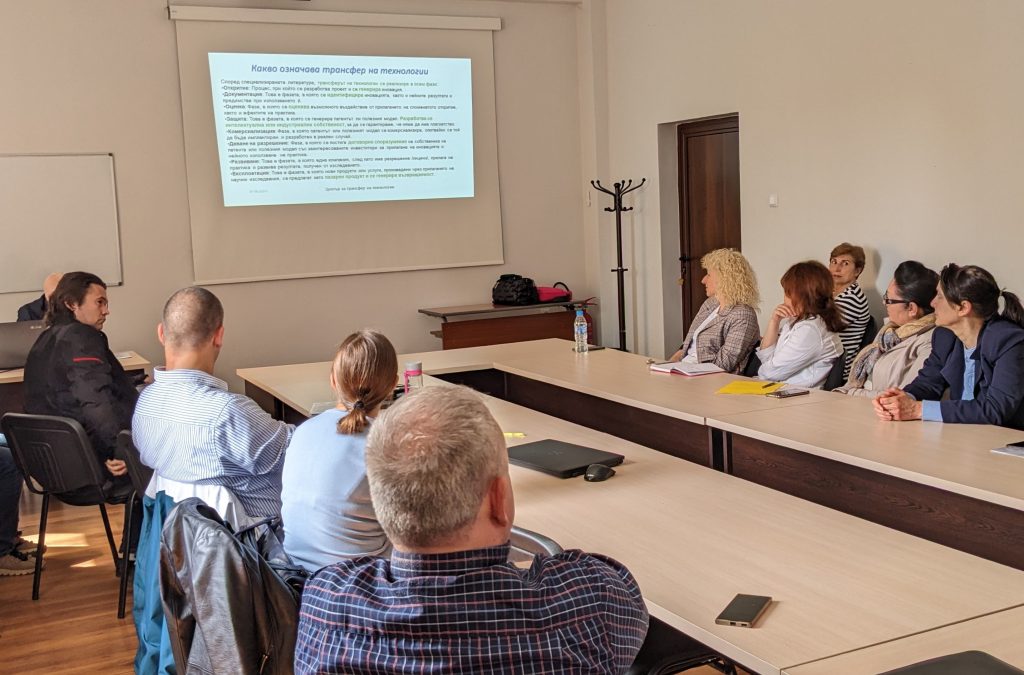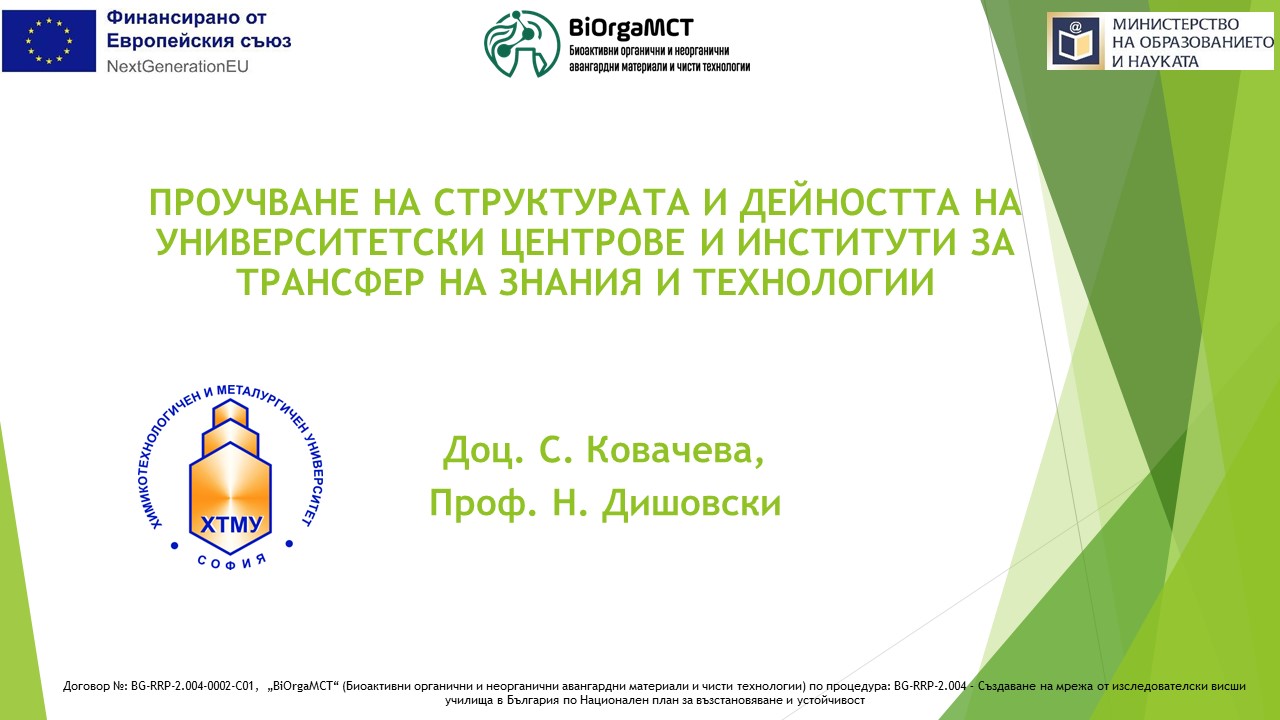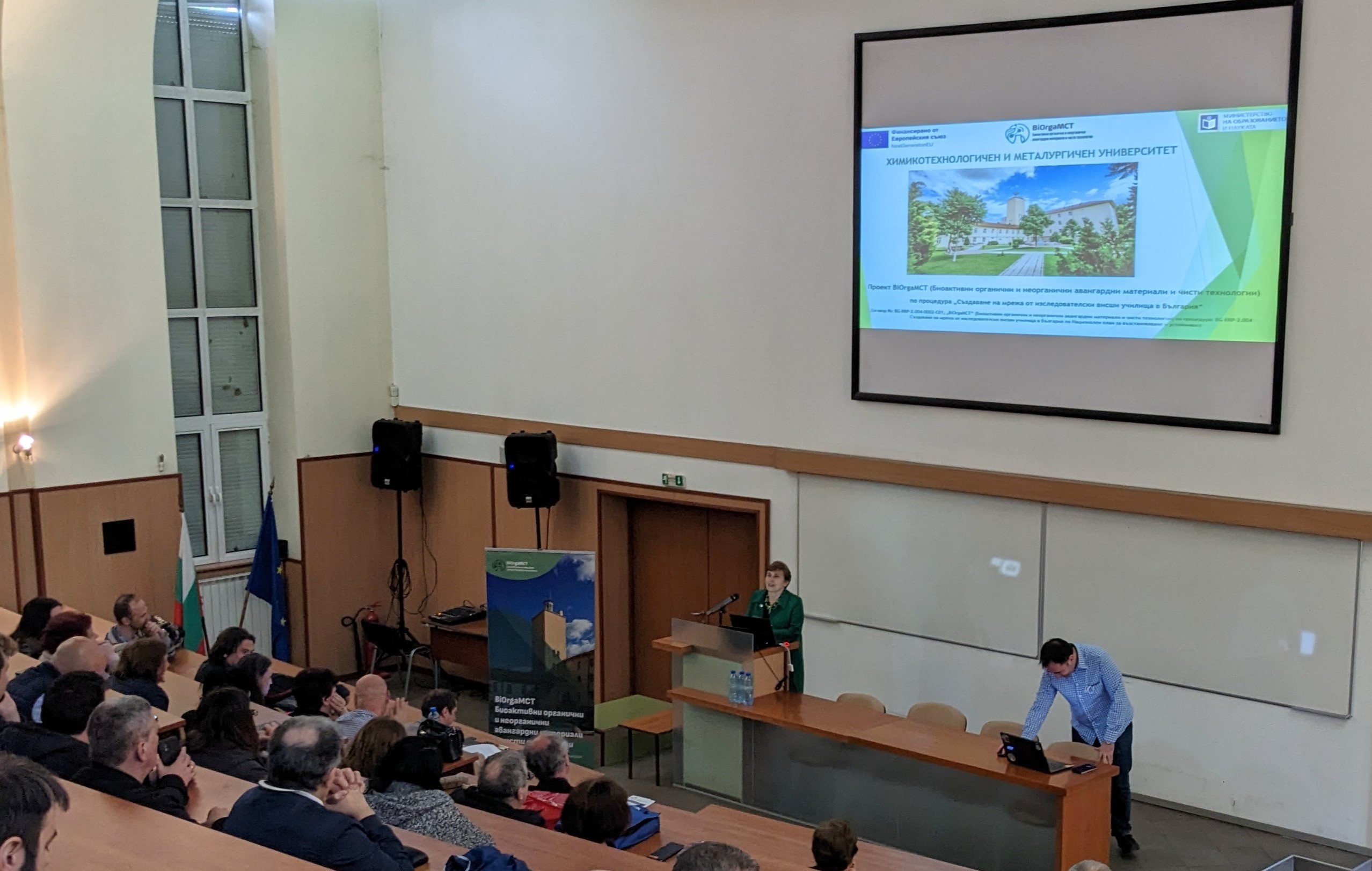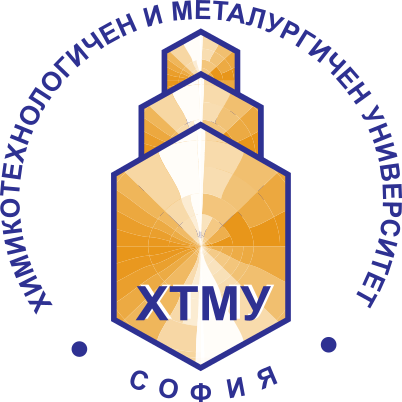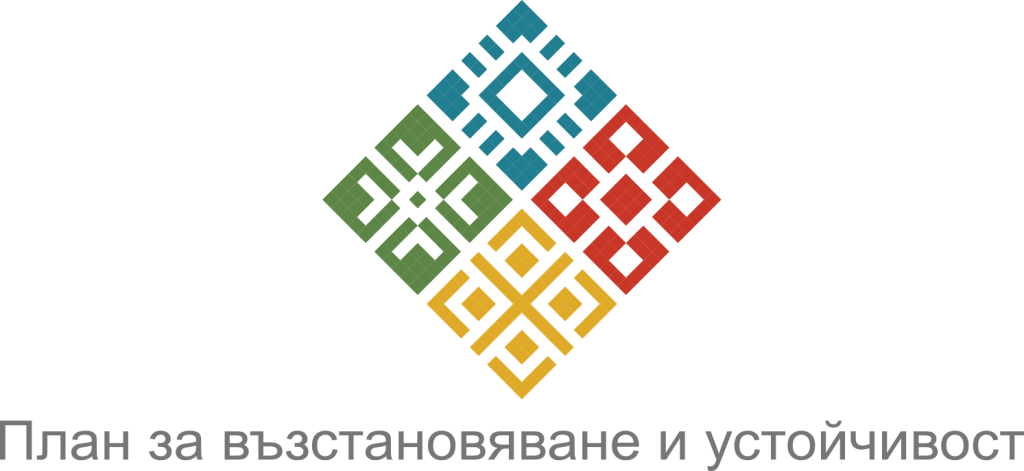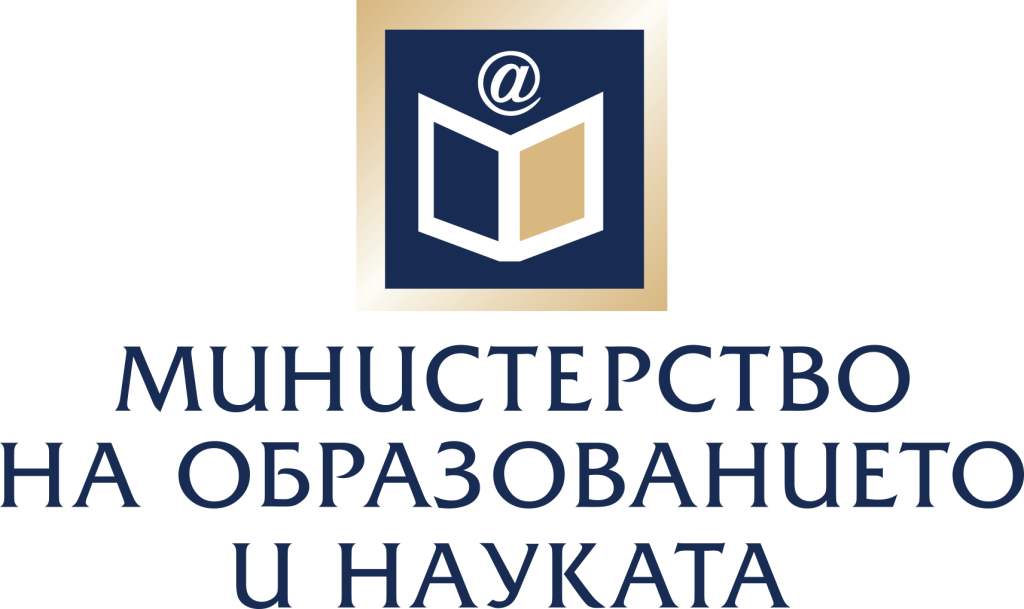About the event
On October 7, 2025, a business forum was held at the Bulgarian Chamber of Commerce and Industry to present the opportunities for determining and reporting of passive solar gains through building envelopes as renewable energy in the energy certification of buildings.
The Rector of UCTM, Prof. Senya Terzieva, welcomed the audience of over 50 participants from business, public institutions and organizations, presenting the main benefits from the implementation of Contract No. BG-RRP-2.004-0002-C03 under the project “BiOrgaMCT” (Bioactive organic and inorganic advanced materials and clean technologies) under procedure: BG-RRP-2.004 – Establishment of a network of research higher education institutions in Bulgaria through the National Recovery and Resilience Plan.
In her presentation, the lecturer at the event, Prof. Nina Penkova from UCTM, noted that passive solar gains are inherent in every building – this is the solar energy that penetrates buildings through windows, walls, and roofs. This energy is definitely renewable – it is solar energy according to all laws, regulations, and directives, but so far it has not been recognized as renewable for various reasons. According to Prof. Penkova, this is not correct and this energy should be included in energy certification.
The presentation made it clear that an algorithm has already been developed to determine passive solar gains through building envelopes using software used in energy audits in Bulgaria. This allows passive solar gains to be taken into account in the certification of buildings as solar thermal energy produced on site.
Taking into account solar gains through building envelopes allows the actual share of renewable energy used in buildings to be determined. In the several cases examined by scientists, it was found that this share is higher than when these gains are not taken into account, as is traditionally the case.
Prof. Penkova emphasized that the inclusion of passively utilized solar energy through the envelope elements will facilitate the design of new buildings and the adaptation of existing ones to the standard for nearly zero-energy buildings. This will also stimulate the future development of materials and technologies for regulating solar heat flows through the elements of “transparent” architecture.
The event was also attended by Ms. Margarita Tomova, a state expert at the Ministry of Environment and Water, who expressed her positive assessment of Prof. Penkova’s presentation and expressed her hope that other researchers in the field would present their views on the topic so that they could be taken into account when updating the concept of energy certification of buildings.
On October 7, 2025, a business forum was held at the Bulgarian Chamber of Commerce and Industry to present the opportunities for determining and reporting of passive solar gains through building envelopes as renewable energy in the energy certification of buildings.
The Rector of UCTM, Prof. Senya Terzieva, welcomed the audience of over 50 participants from business, public institutions and organizations, presenting the main benefits from the implementation of Contract No. BG-RRP-2.004-0002-C03 under the project “BiOrgaMCT” (Bioactive organic and inorganic advanced materials and clean technologies) under procedure: BG-RRP-2.004 – Establishment of a network of research higher education institutions in Bulgaria through the National Recovery and Resilience Plan.
In her presentation, the lecturer at the event, Prof. Nina Penkova from UCTM, noted that passive solar gains are inherent in every building – this is the solar energy that penetrates buildings through windows, walls, and roofs. This energy is definitely renewable – it is solar energy according to all laws, regulations, and directives, but so far it has not been recognized as renewable for various reasons. According to Prof. Penkova, this is not correct and this energy should be included in energy certification.
The presentation made it clear that an algorithm has already been developed to determine passive solar gains through building envelopes using software used in energy audits in Bulgaria. This allows passive solar gains to be taken into account in the certification of buildings as solar thermal energy produced on site.
Taking into account solar gains through building envelopes allows the actual share of renewable energy used in buildings to be determined. In the several cases examined by scientists, it was found that this share is higher than when these gains are not taken into account, as is traditionally the case.
Prof. Penkova emphasized that the inclusion of passively utilized solar energy through the envelope elements will facilitate the design of new buildings and the adaptation of existing ones to the standard for nearly zero-energy buildings. This will also stimulate the future development of materials and technologies for regulating solar heat flows through the elements of “transparent” architecture.
The event was also attended by Ms. Margarita Tomova, a state expert at the Ministry of Environment and Water, who expressed her positive assessment of Prof. Penkova’s presentation and expressed her hope that other researchers in the field would present their views on the topic so that they could be taken into account when updating the concept of energy certification of buildings.

